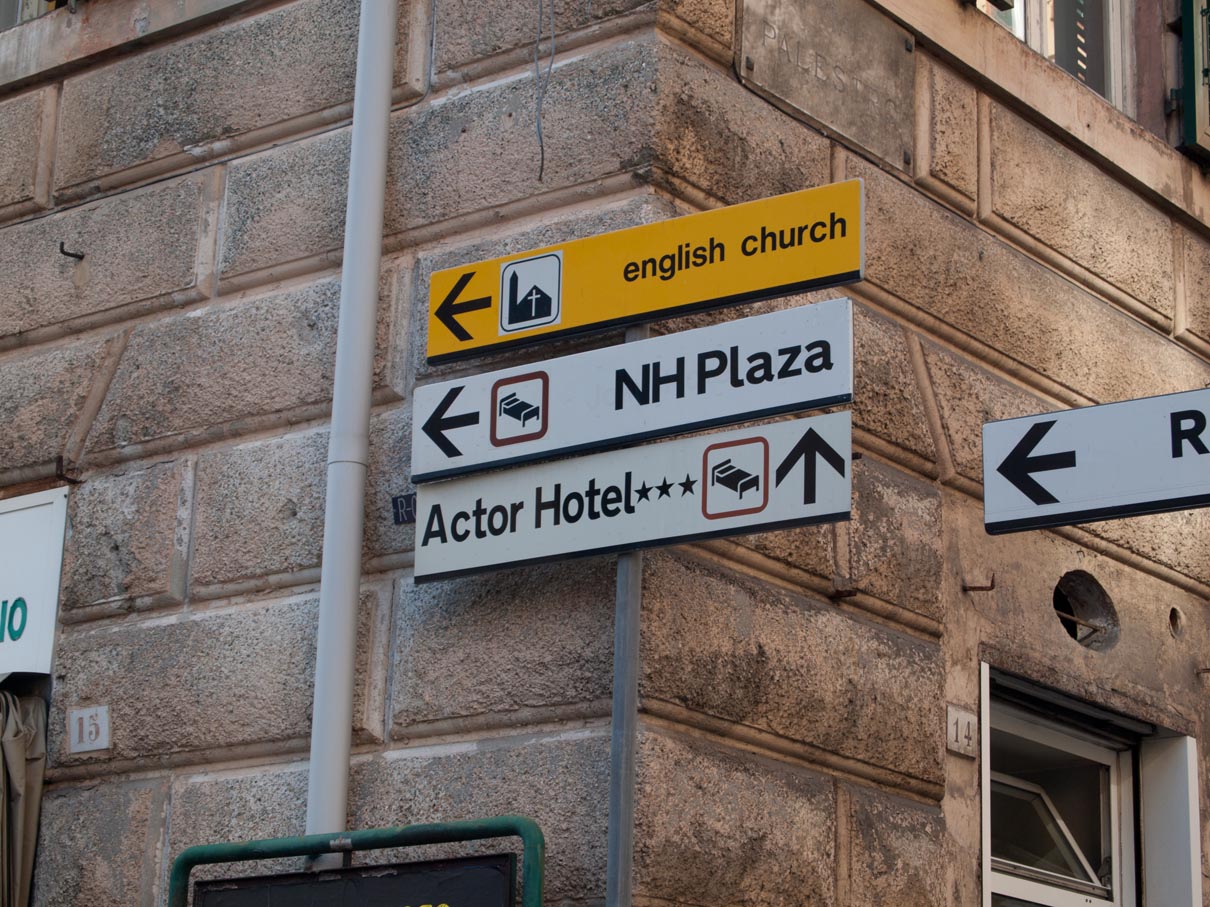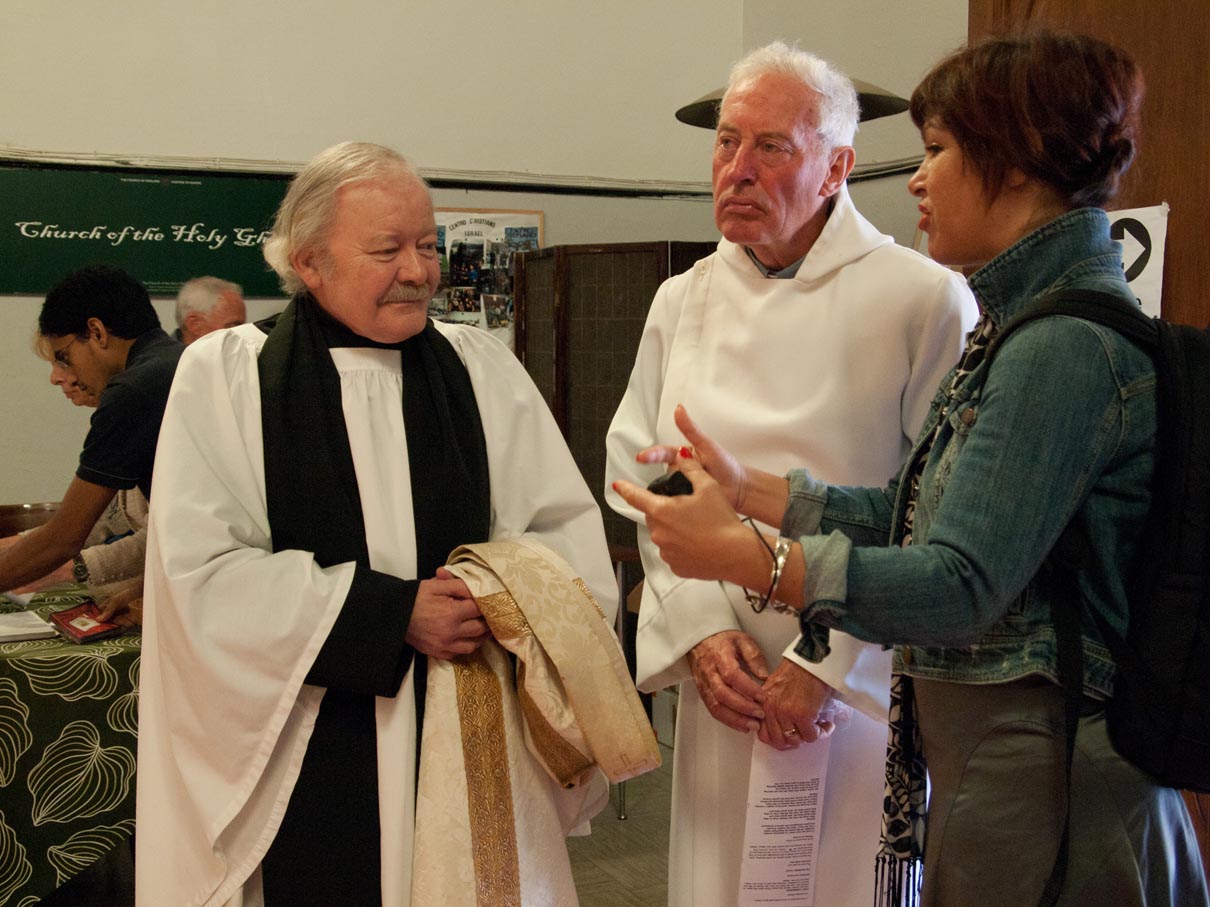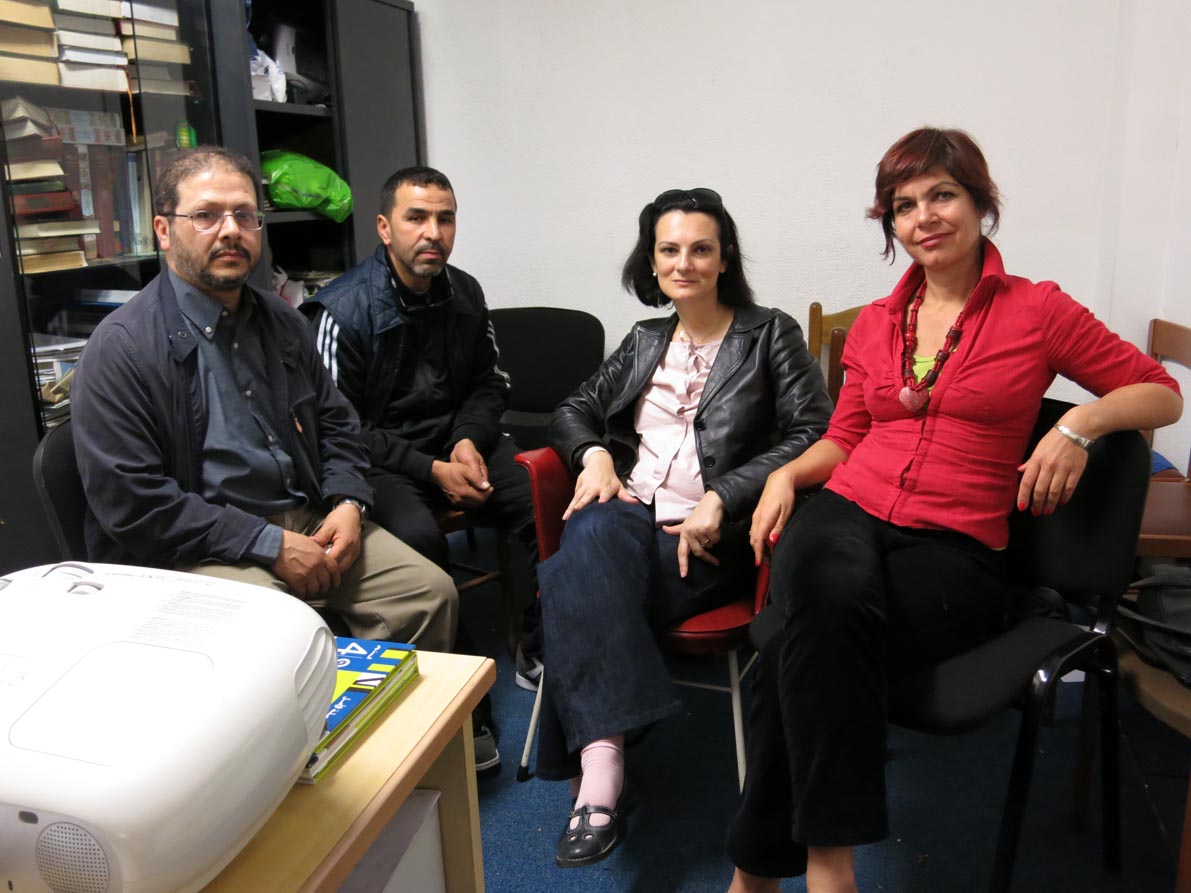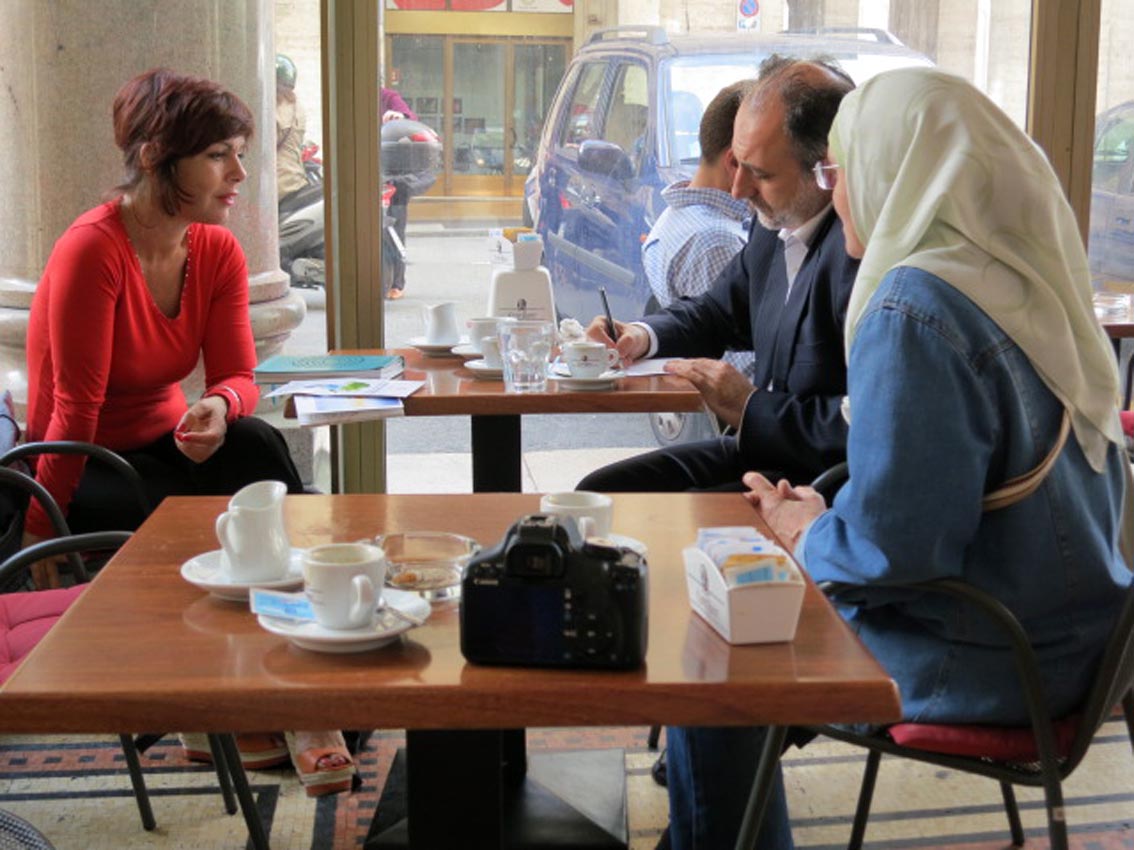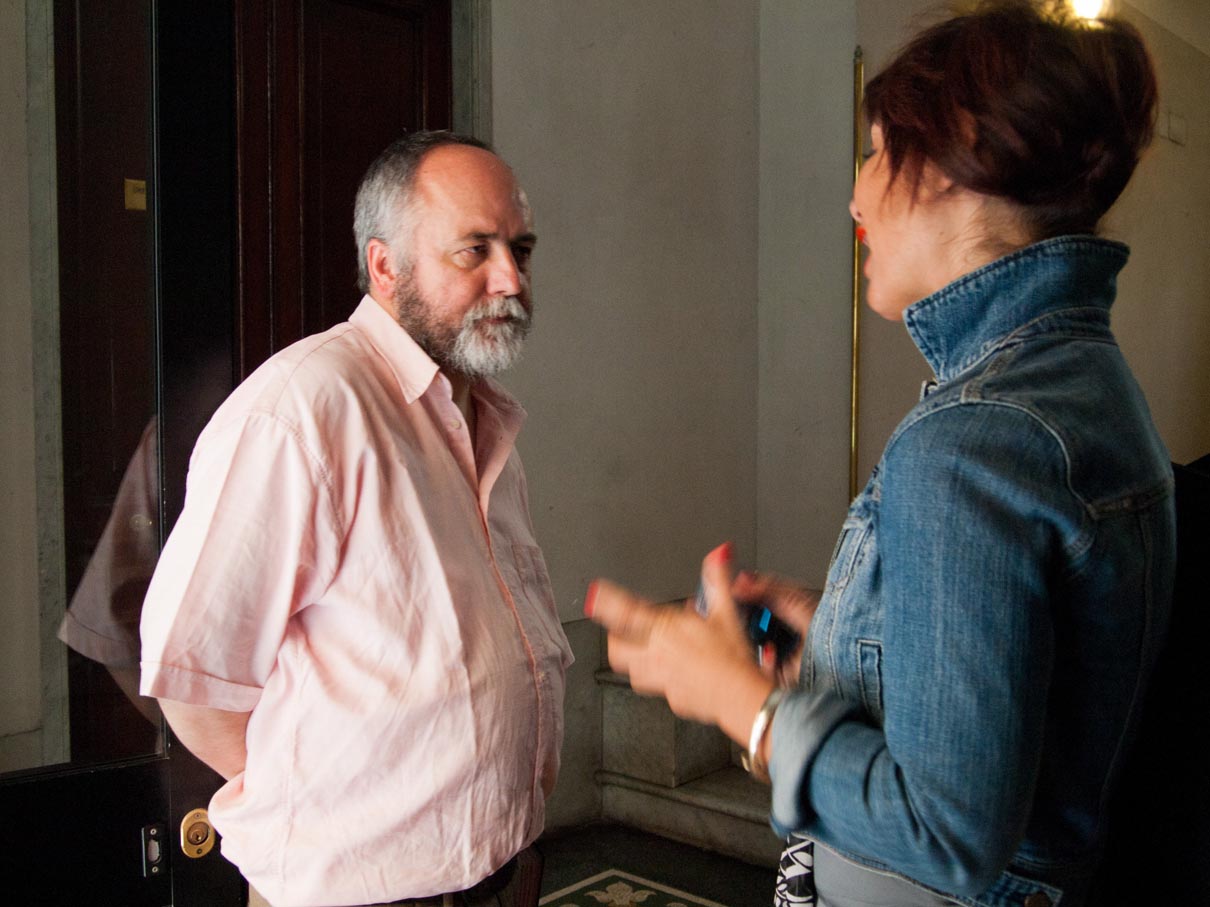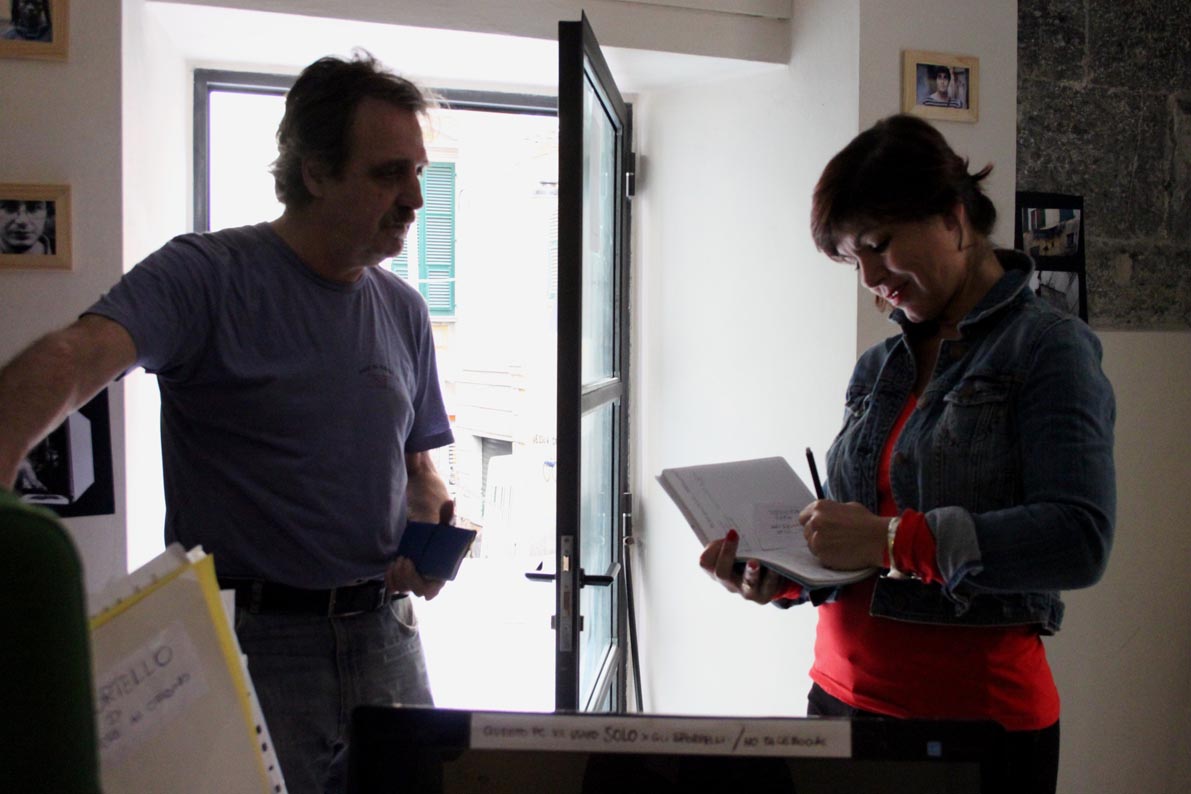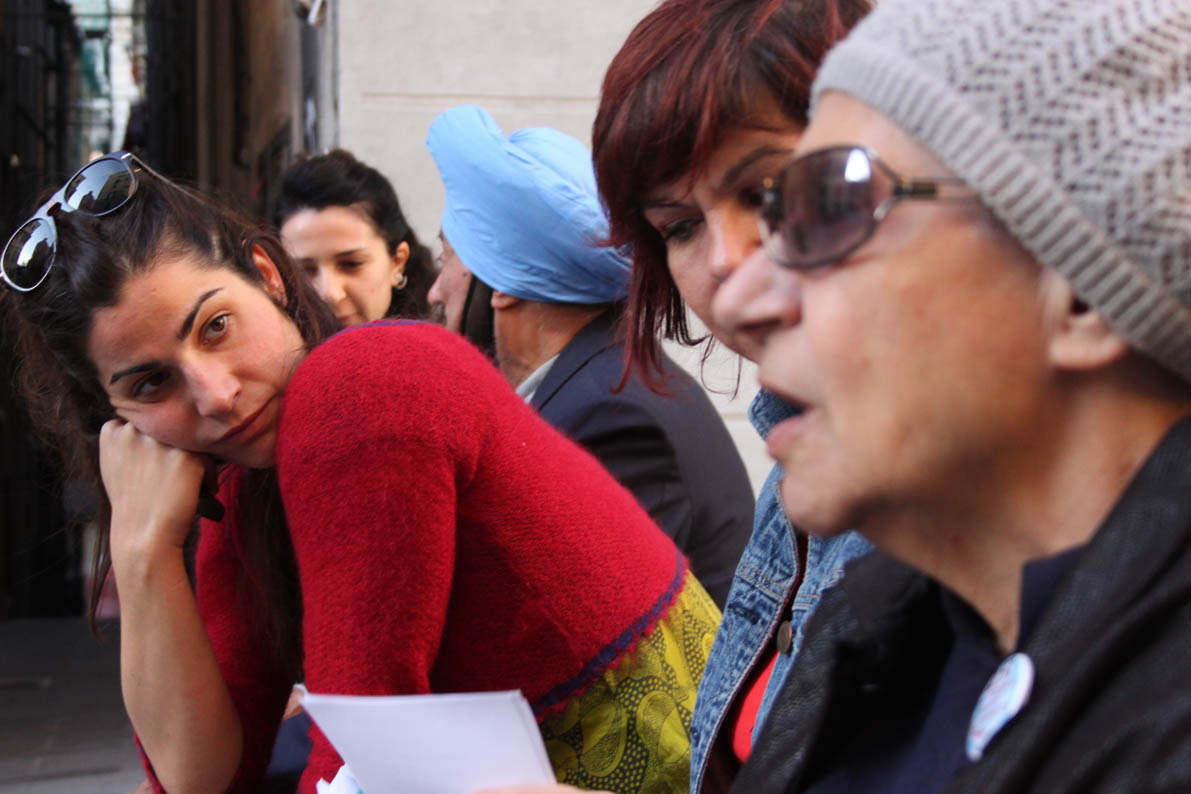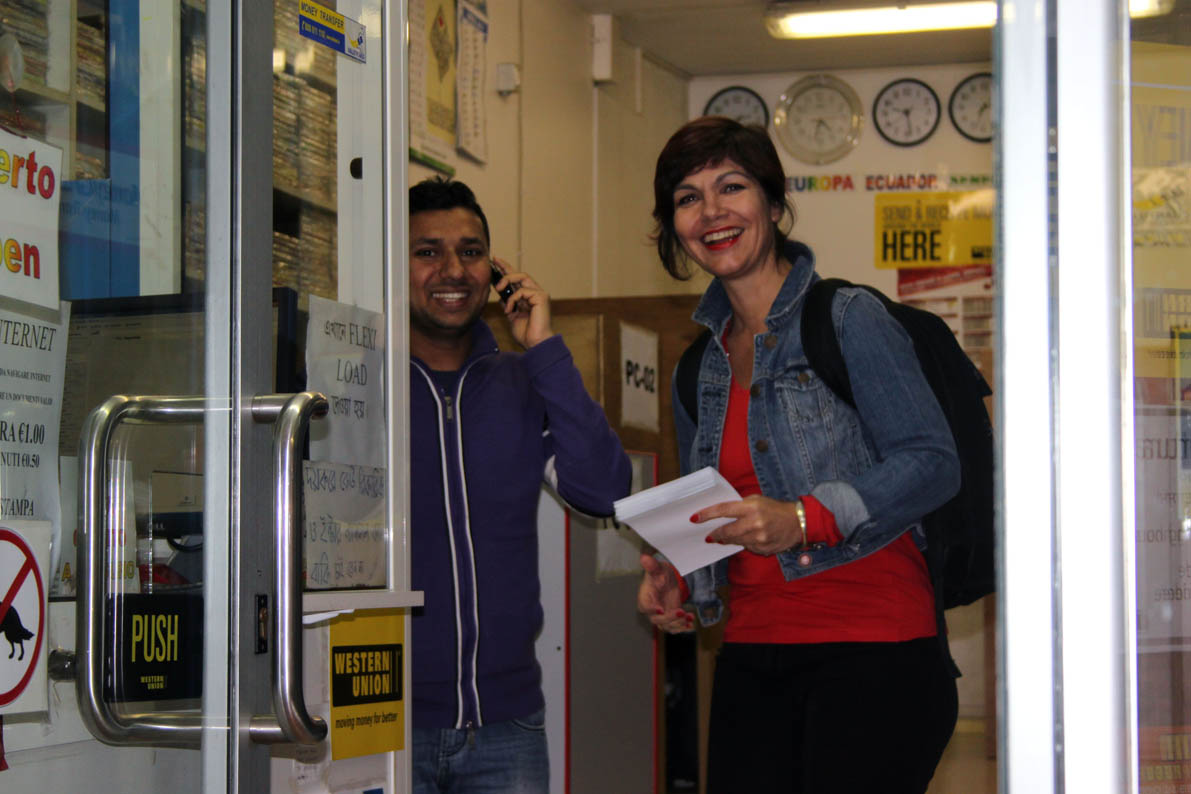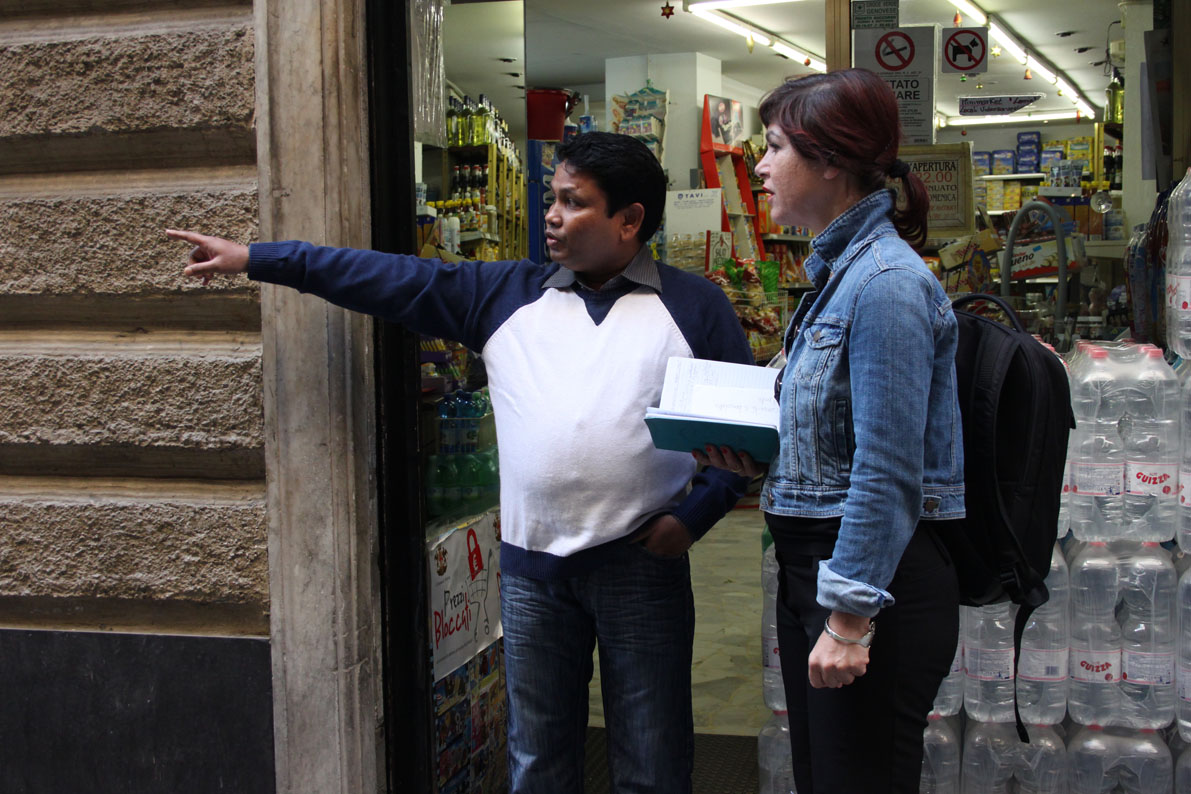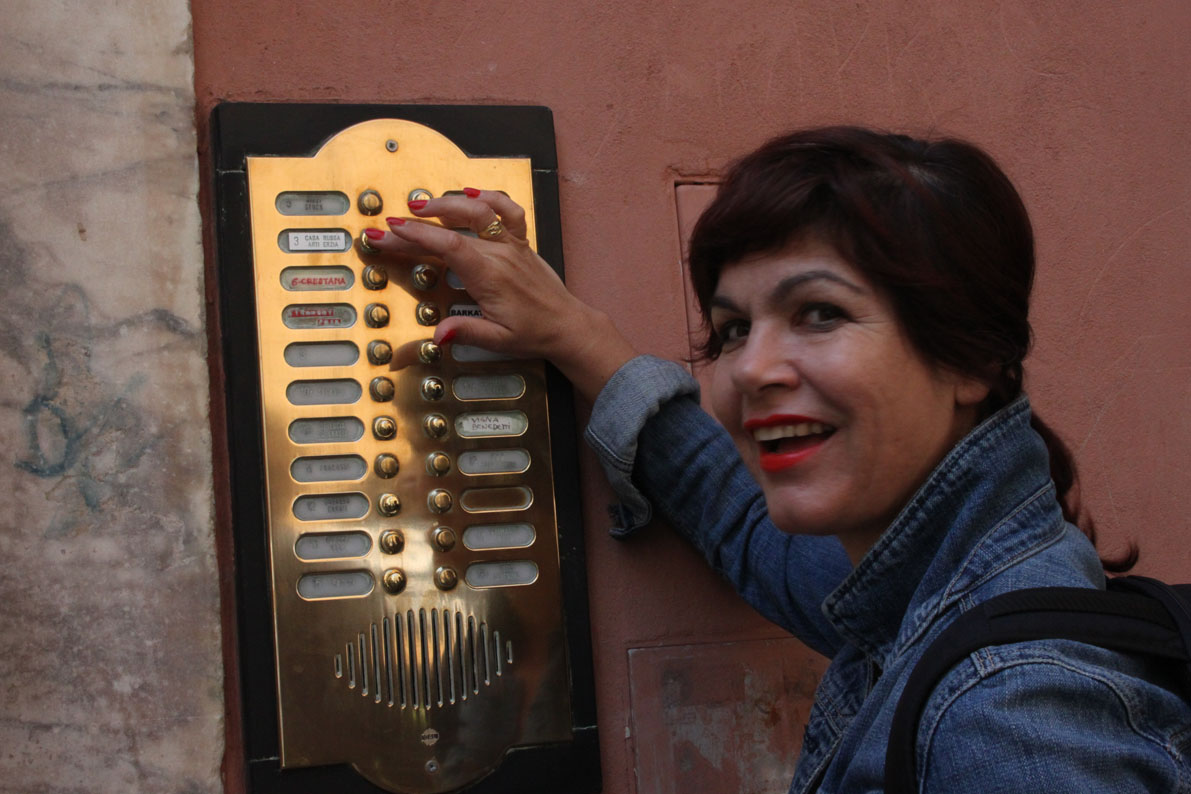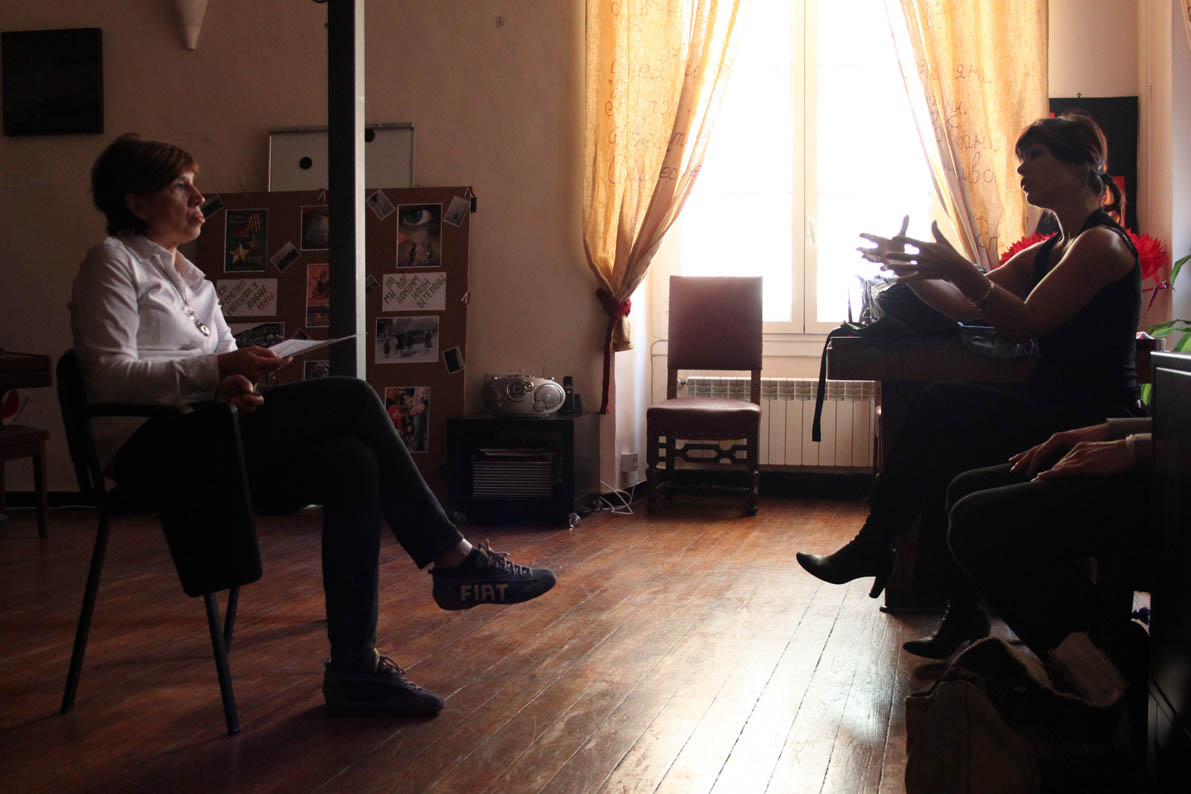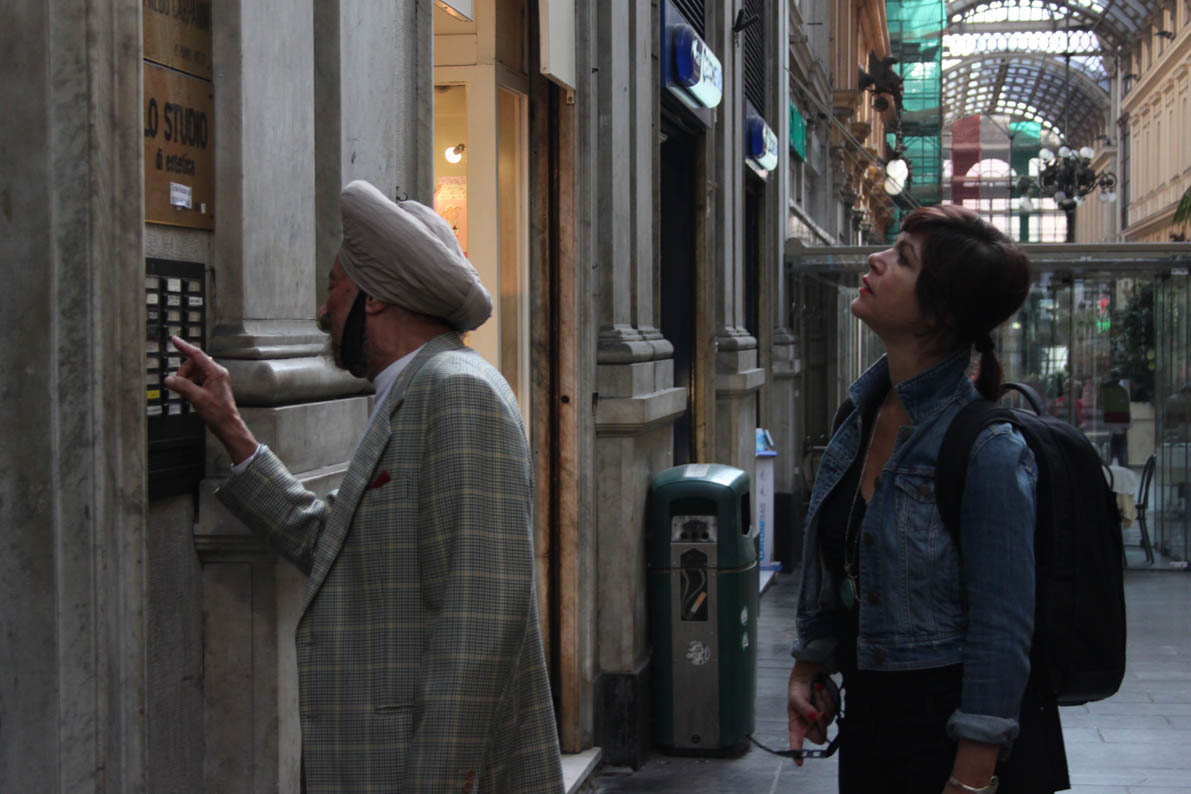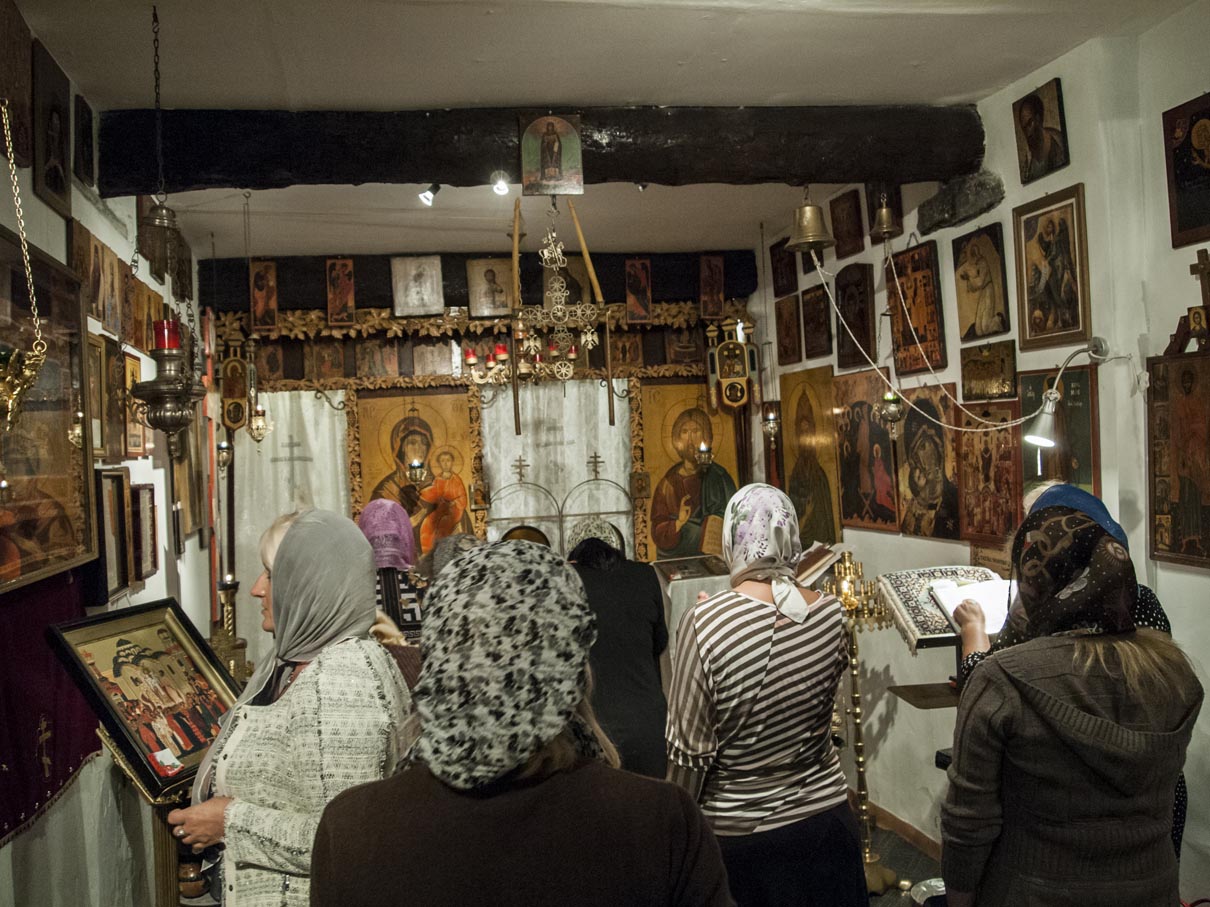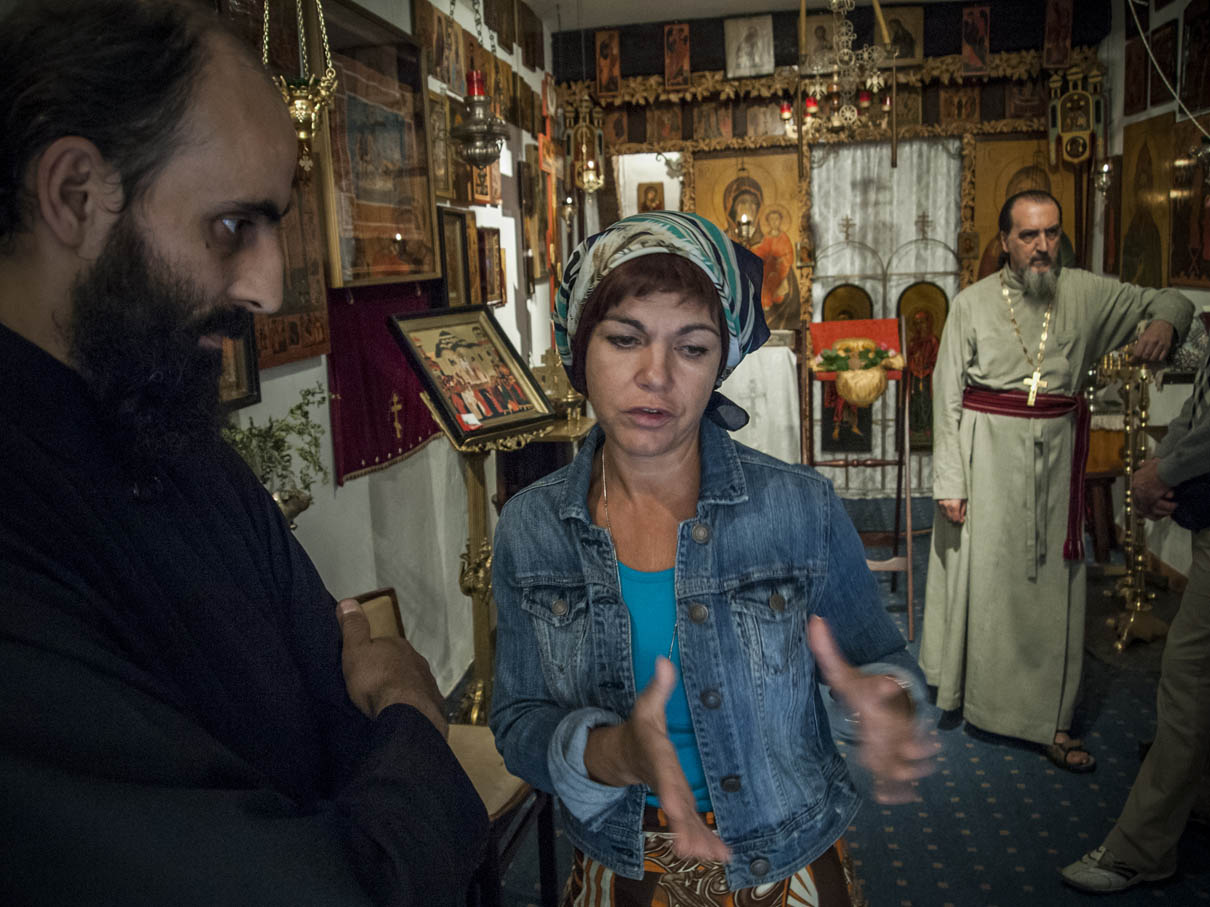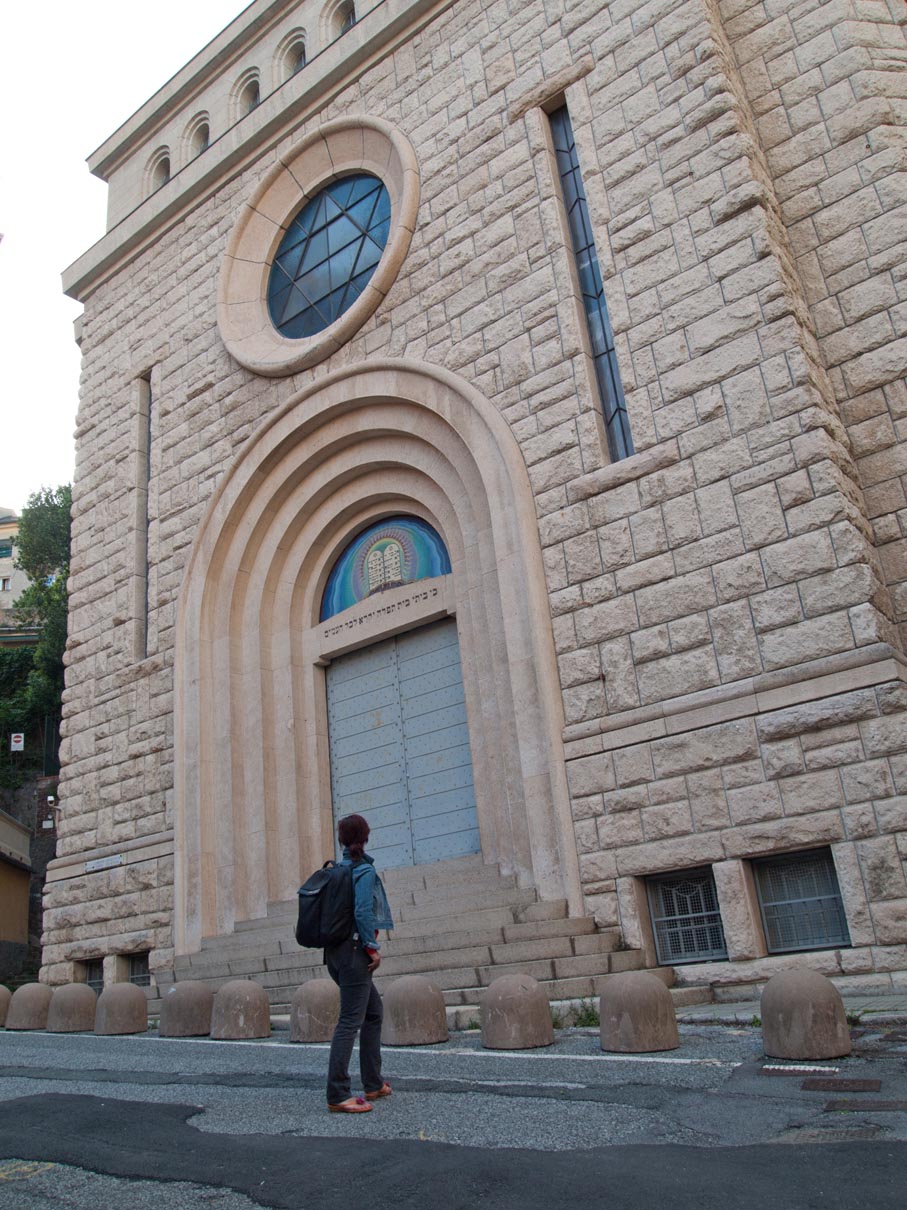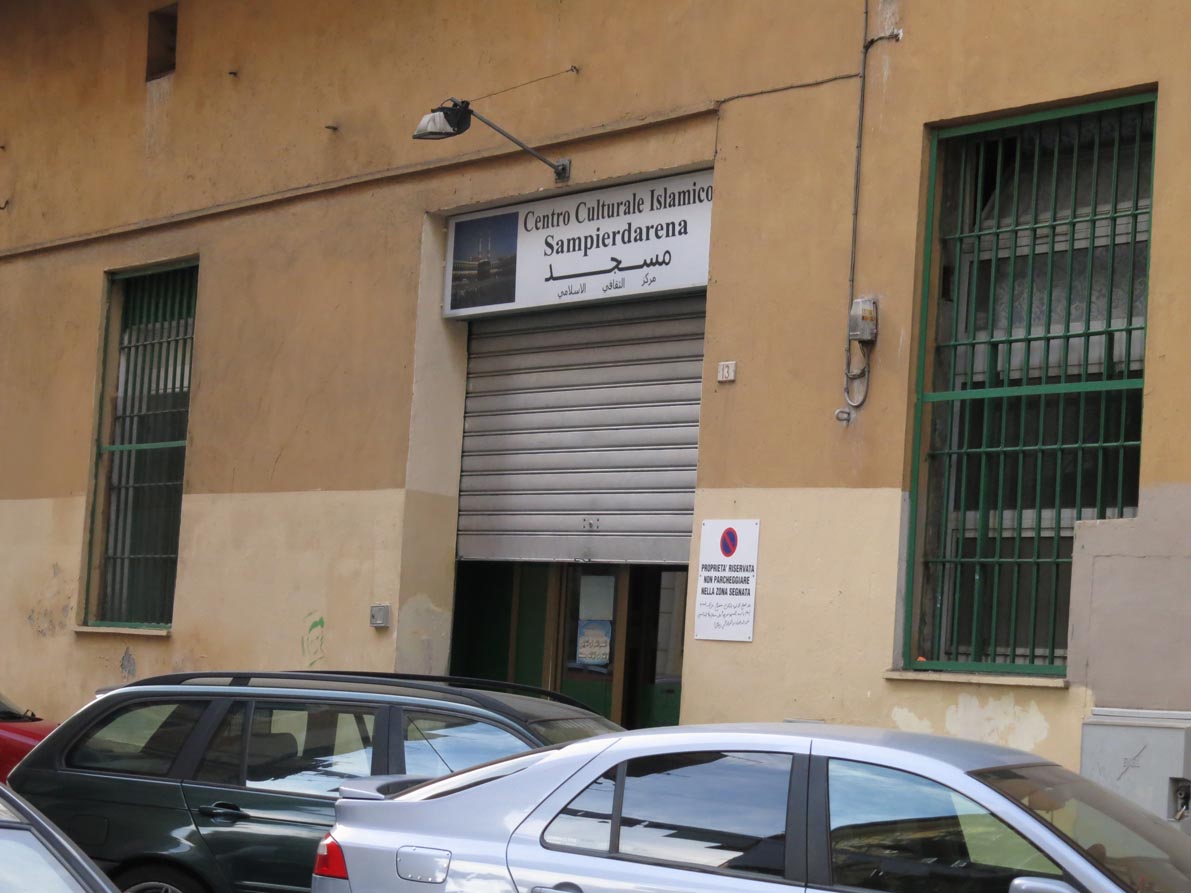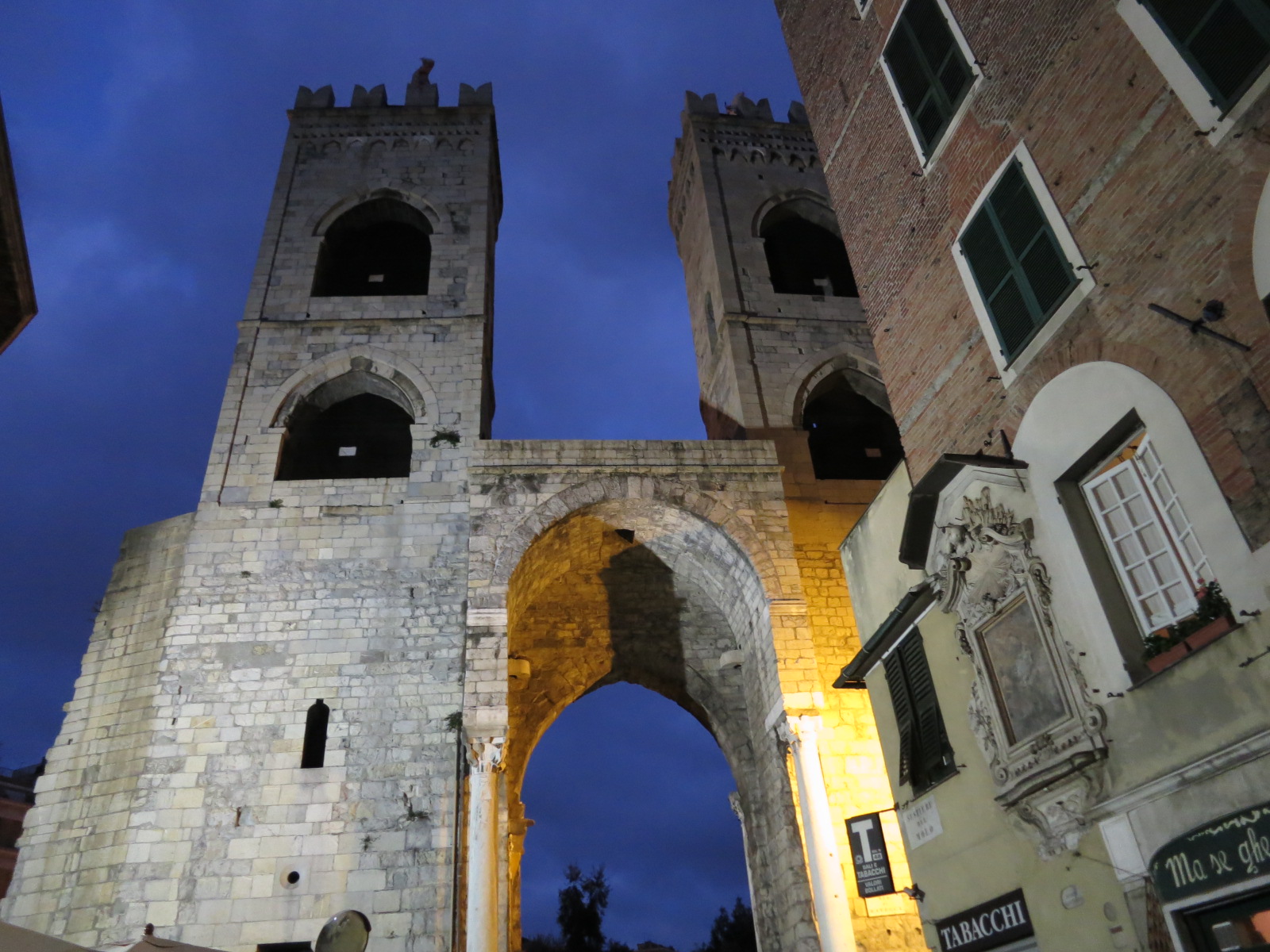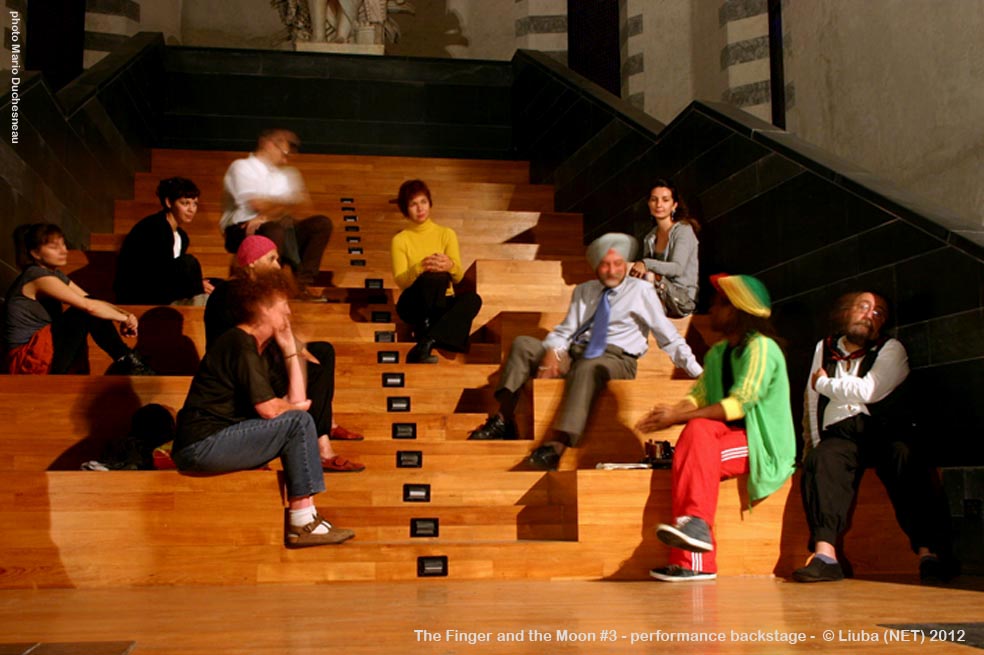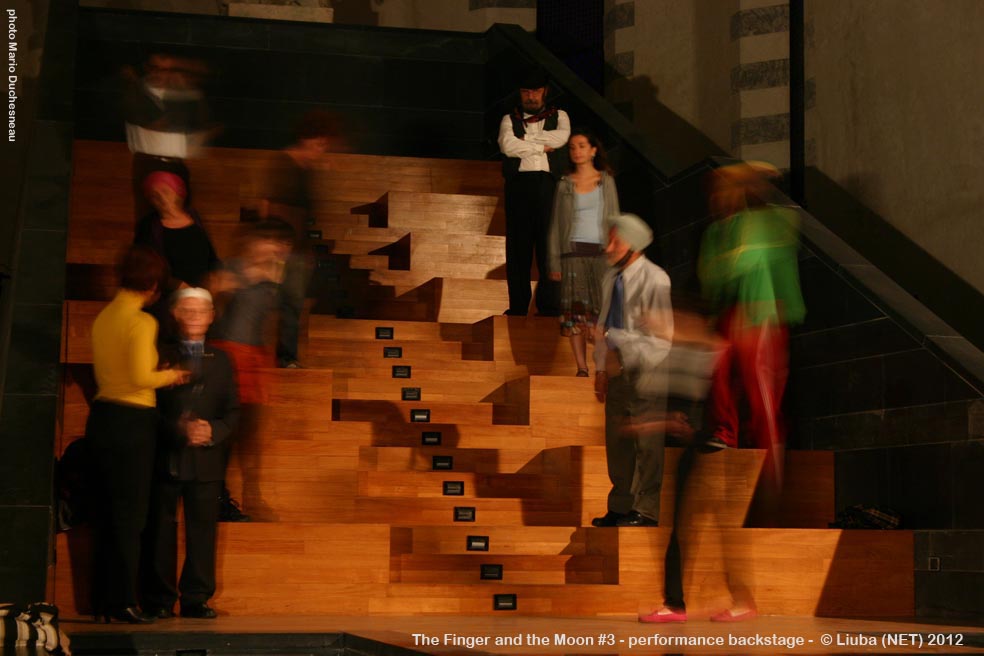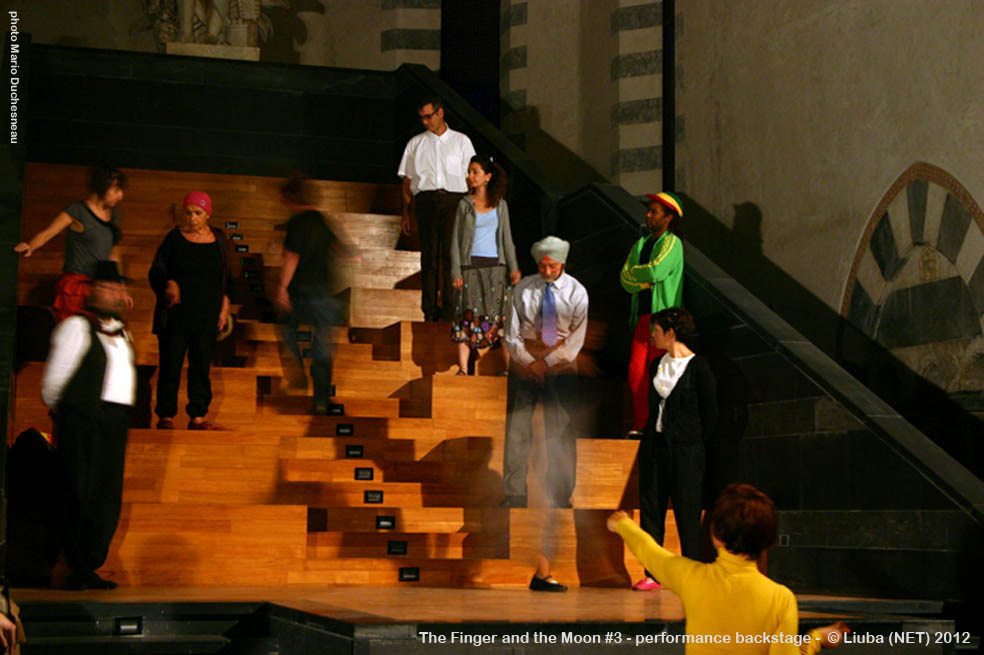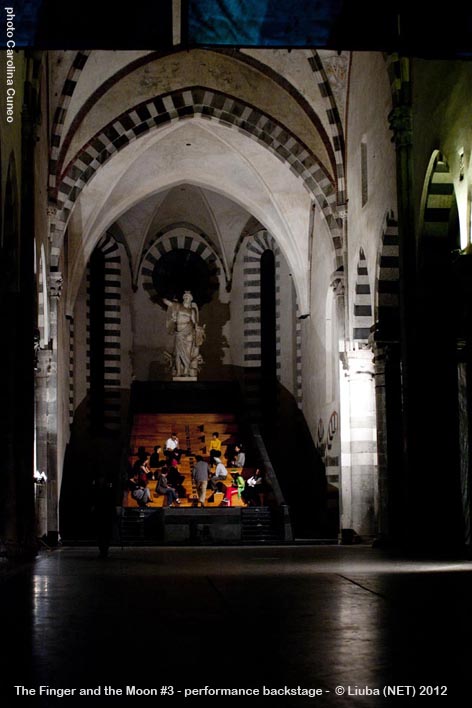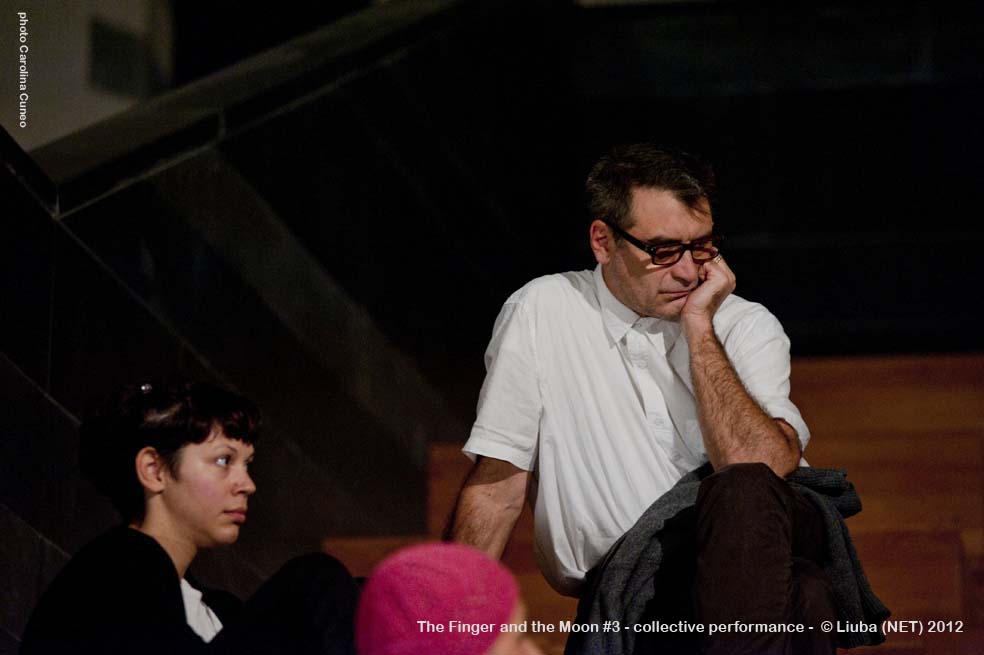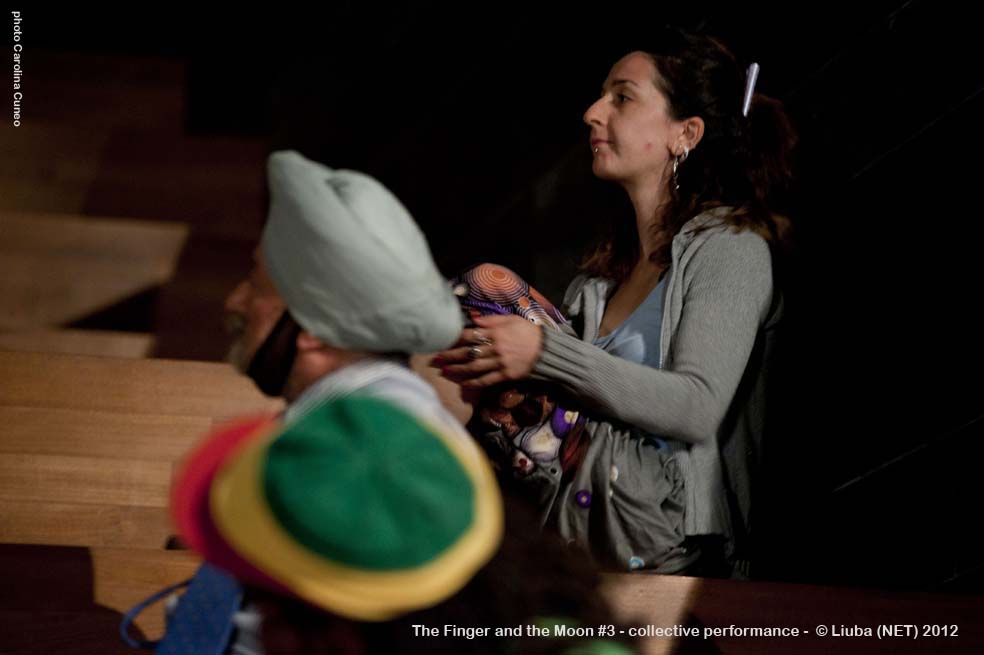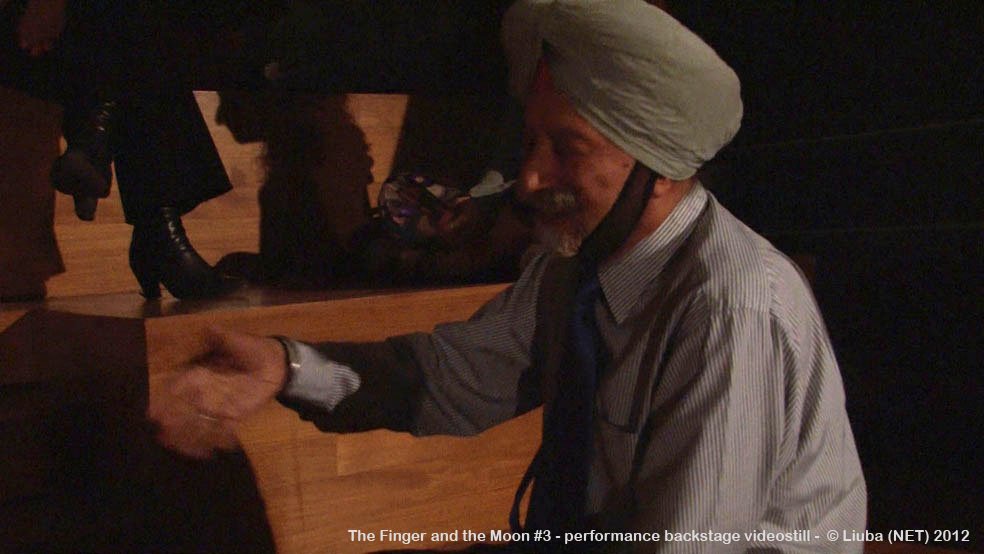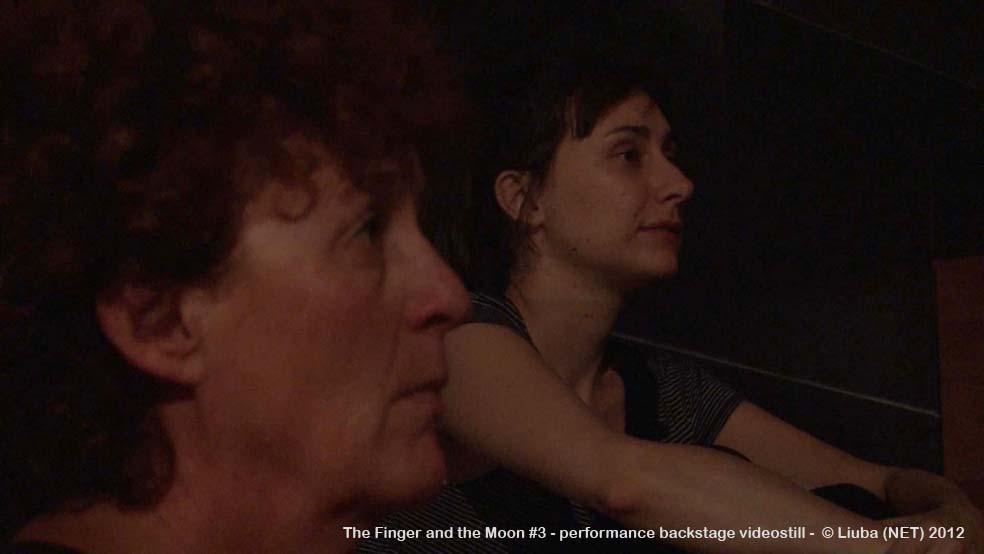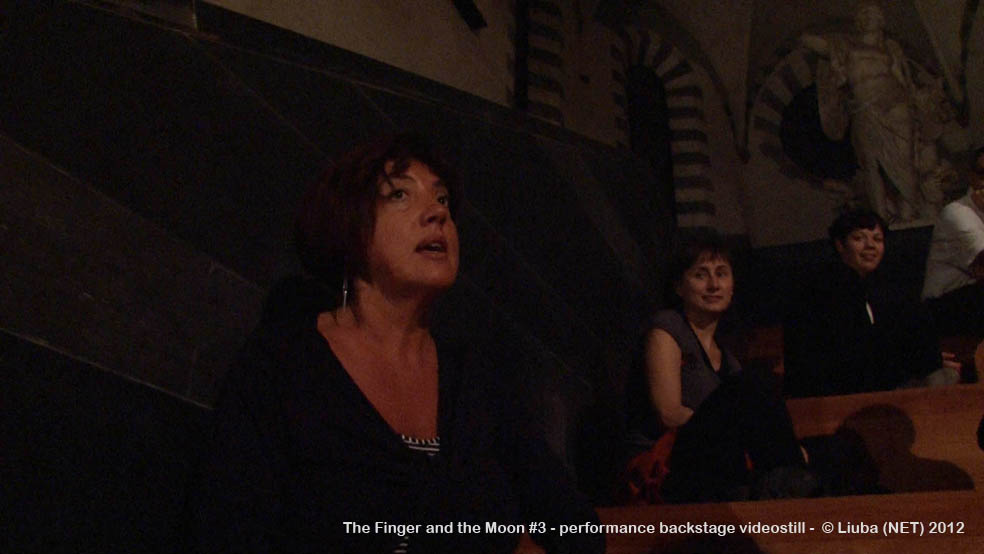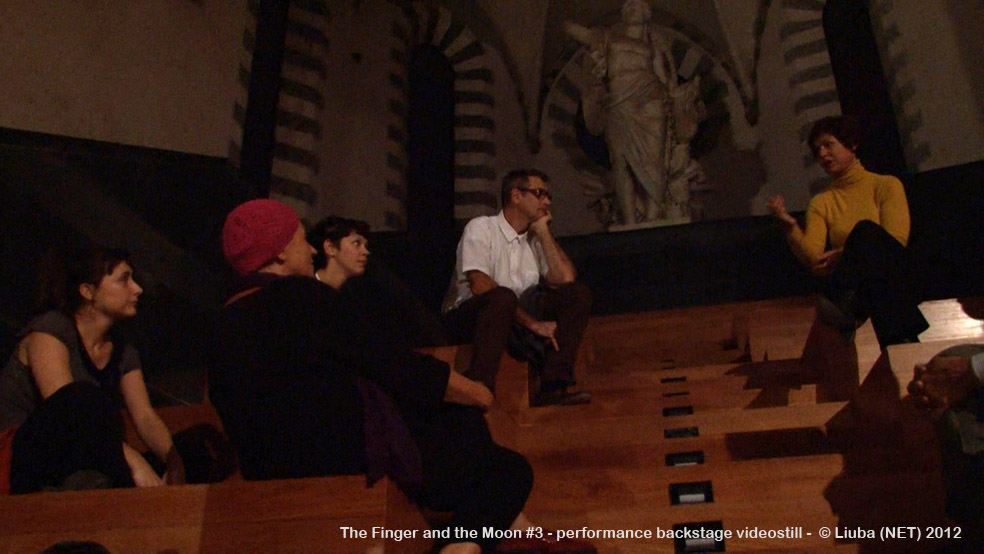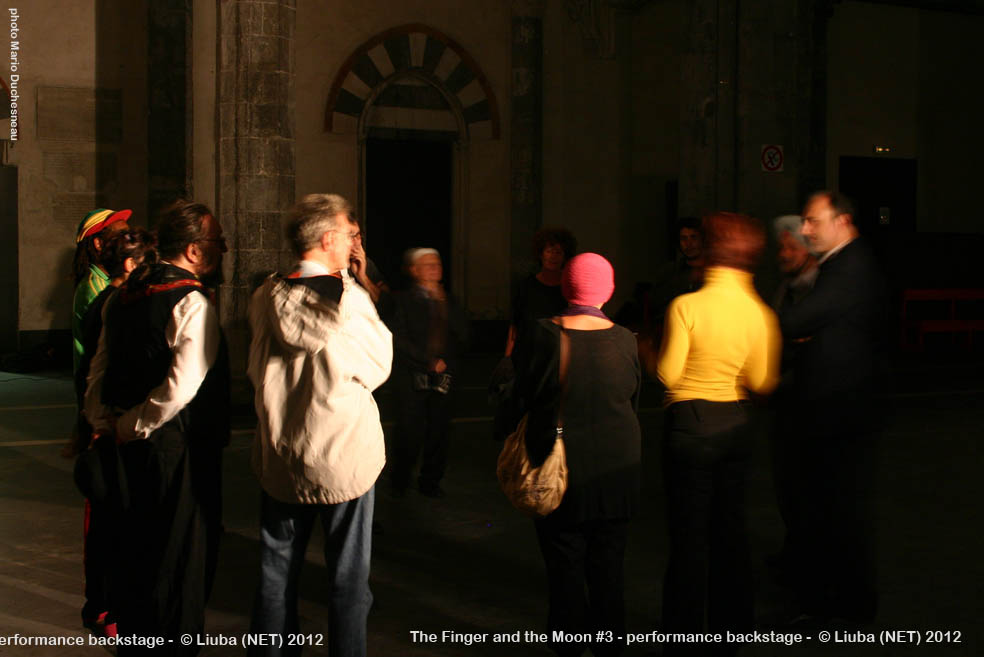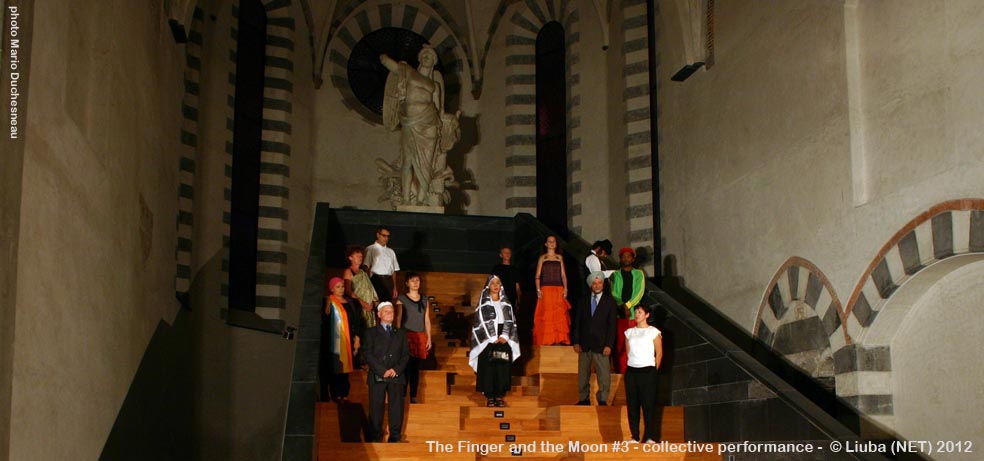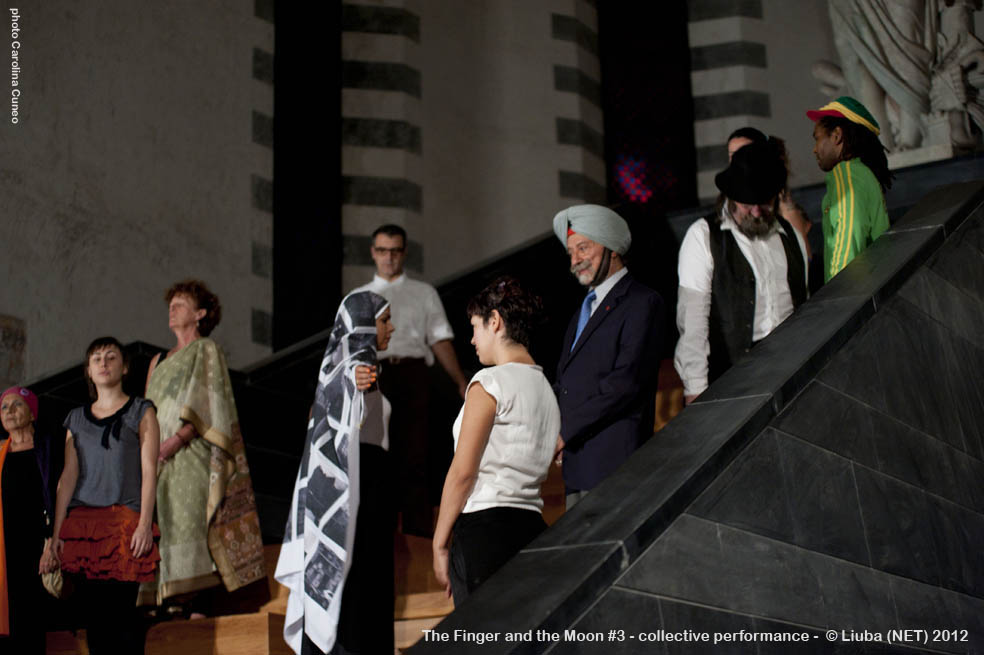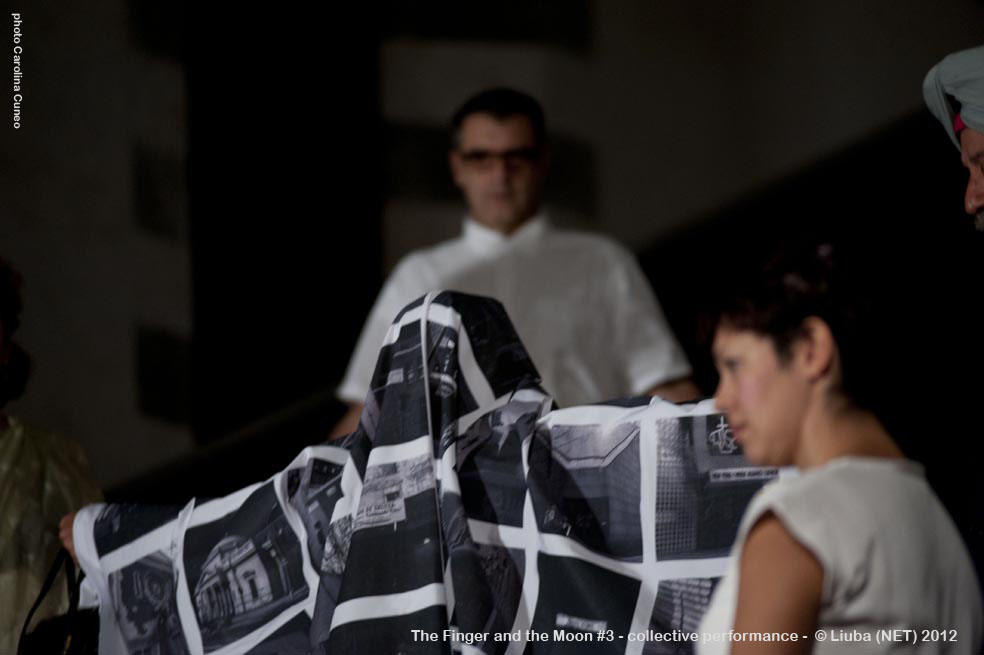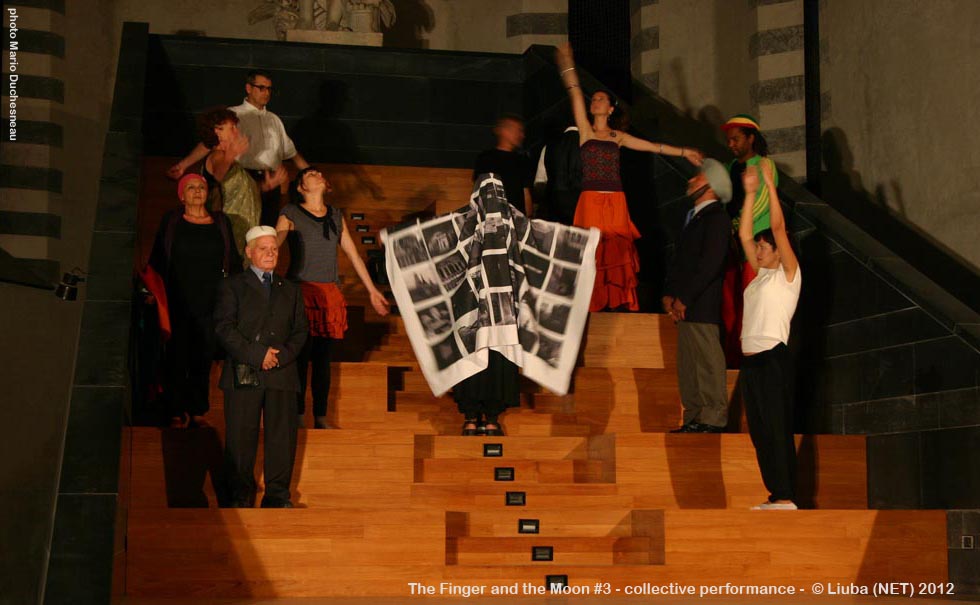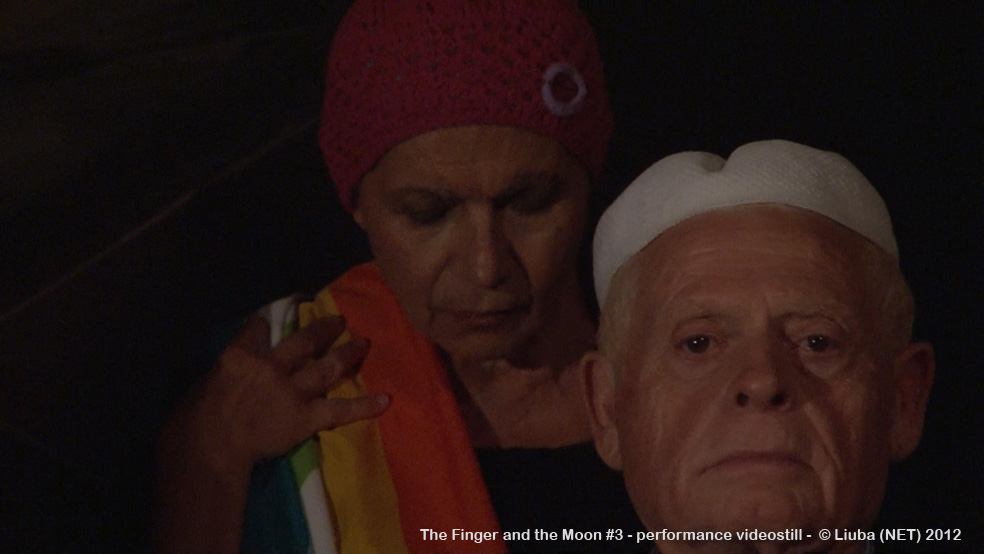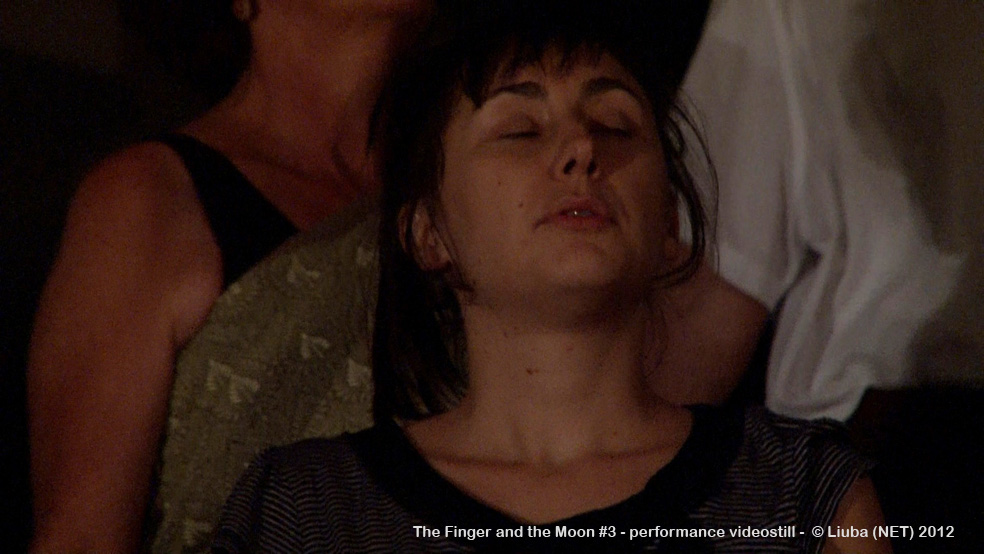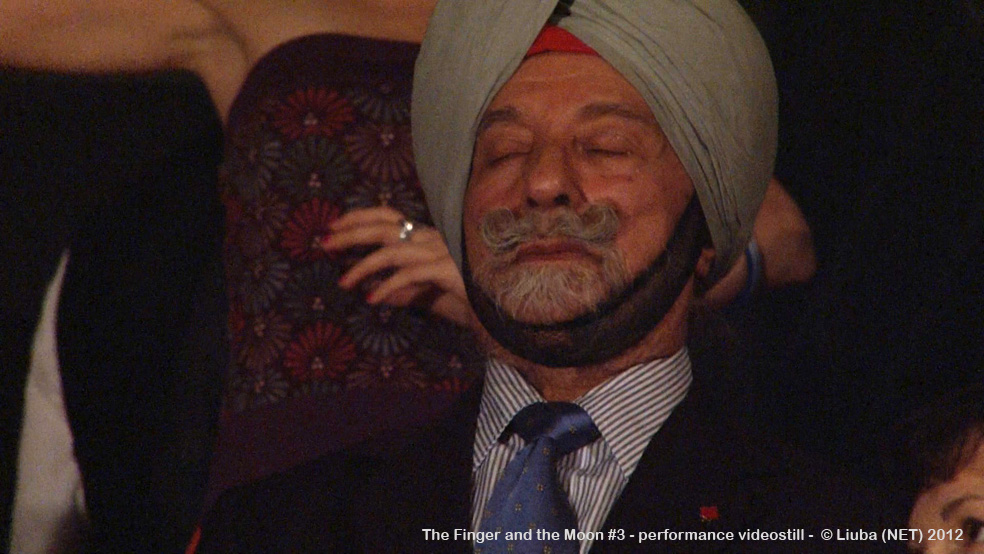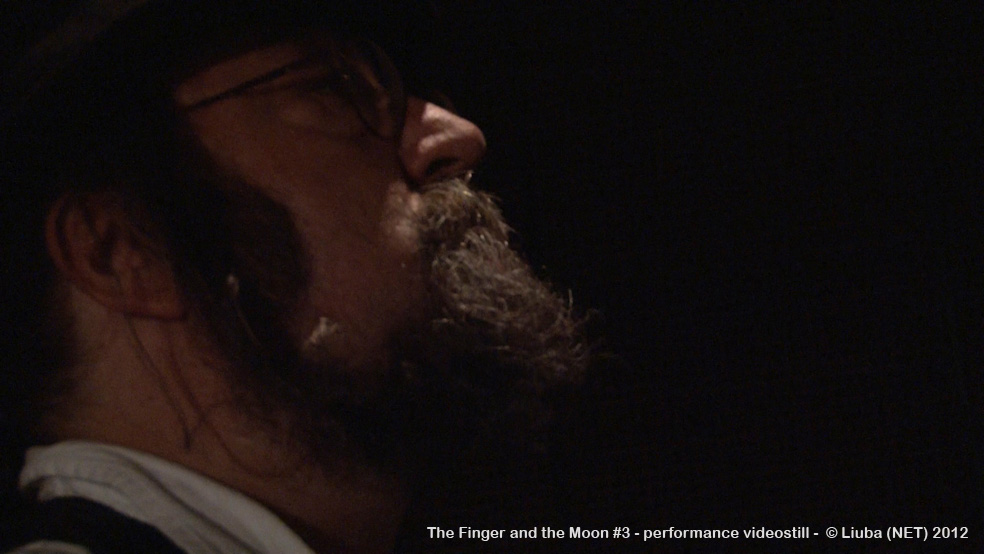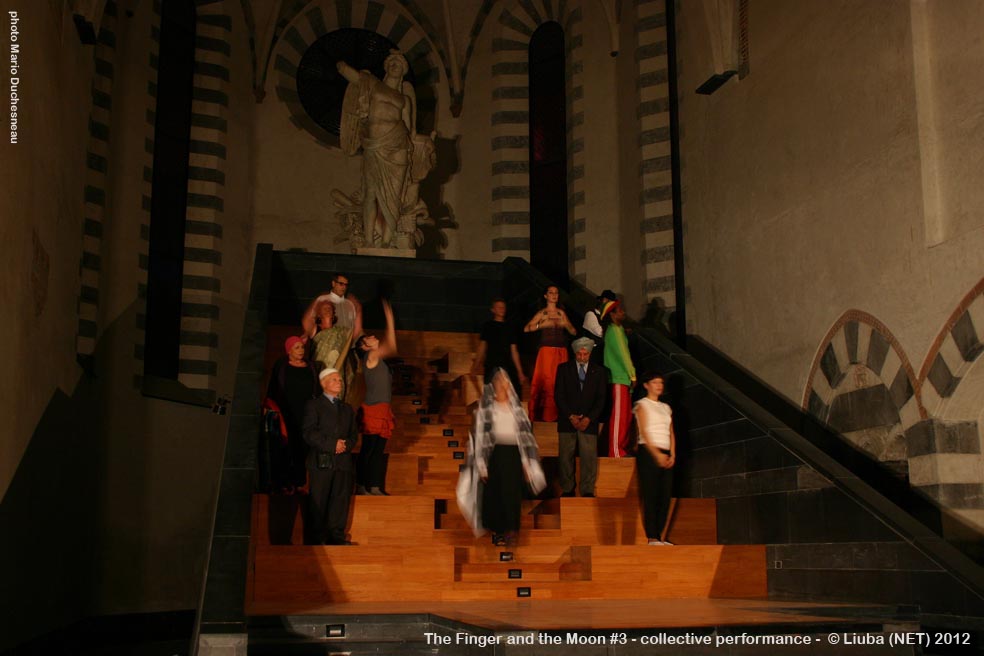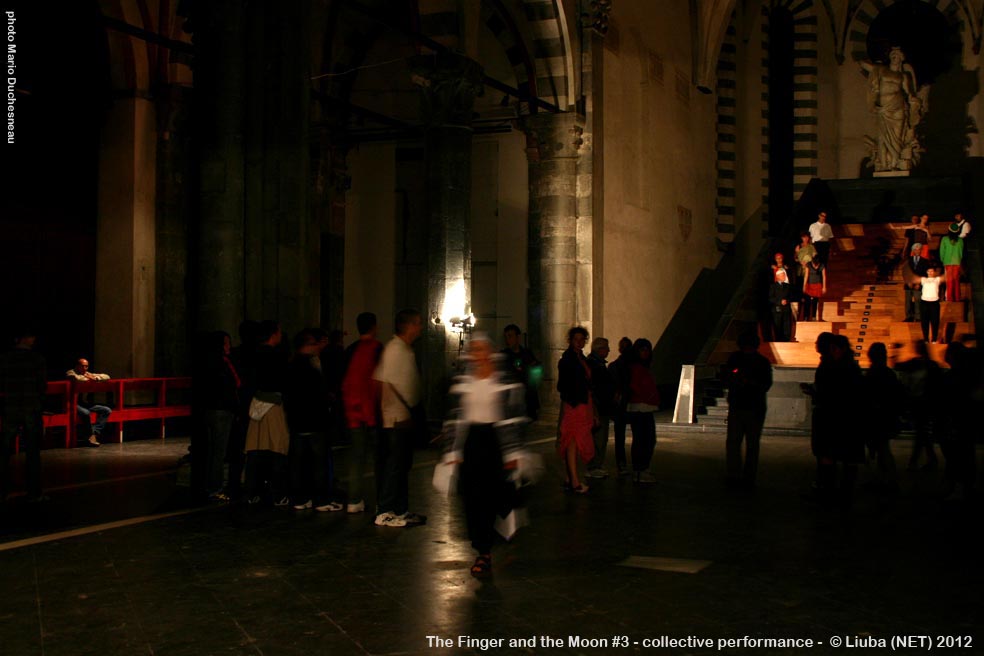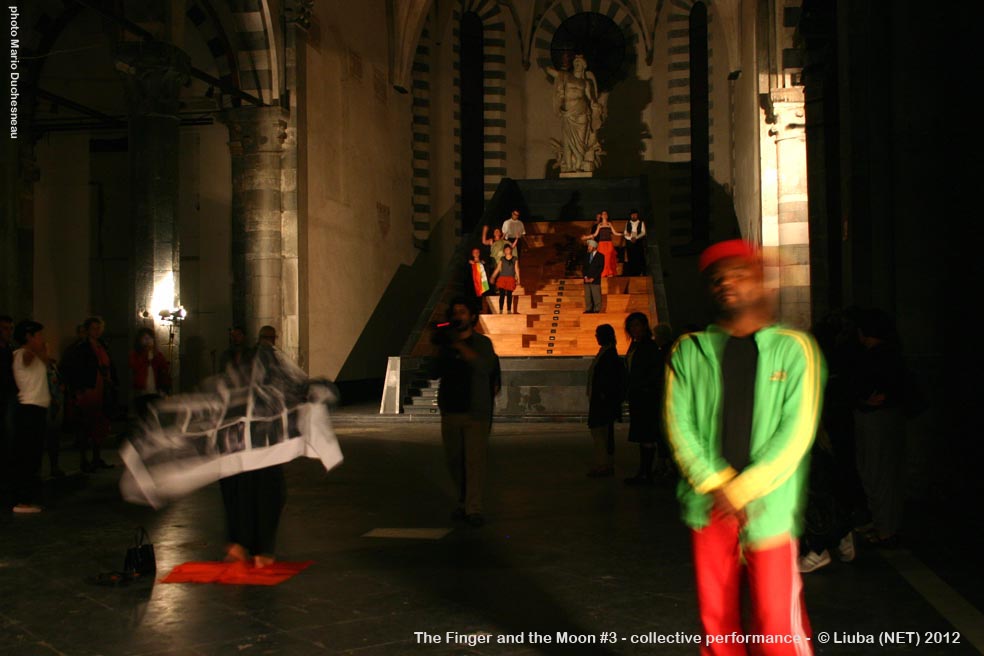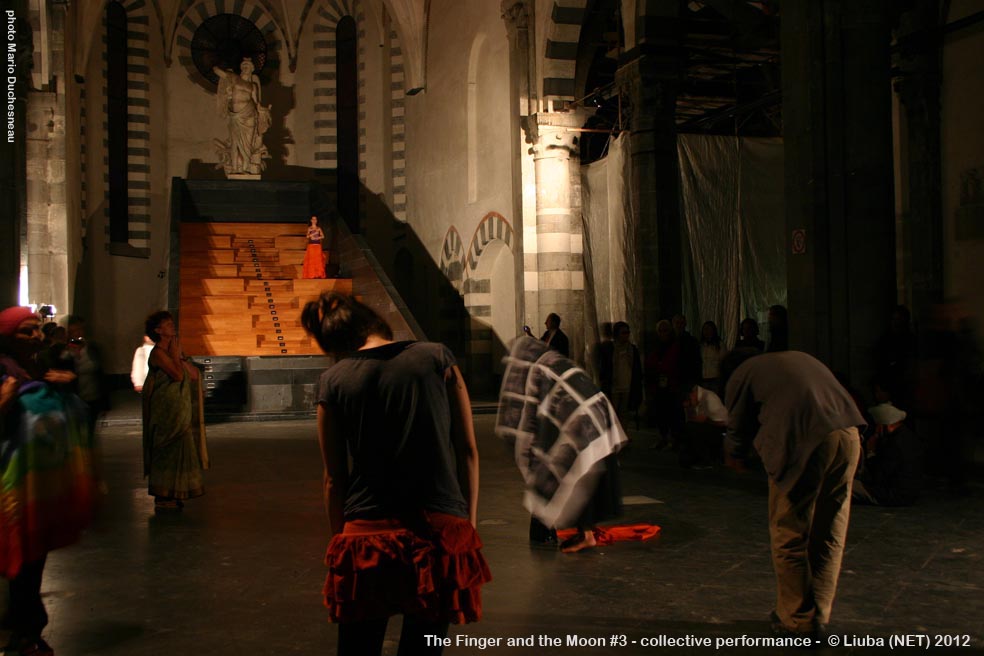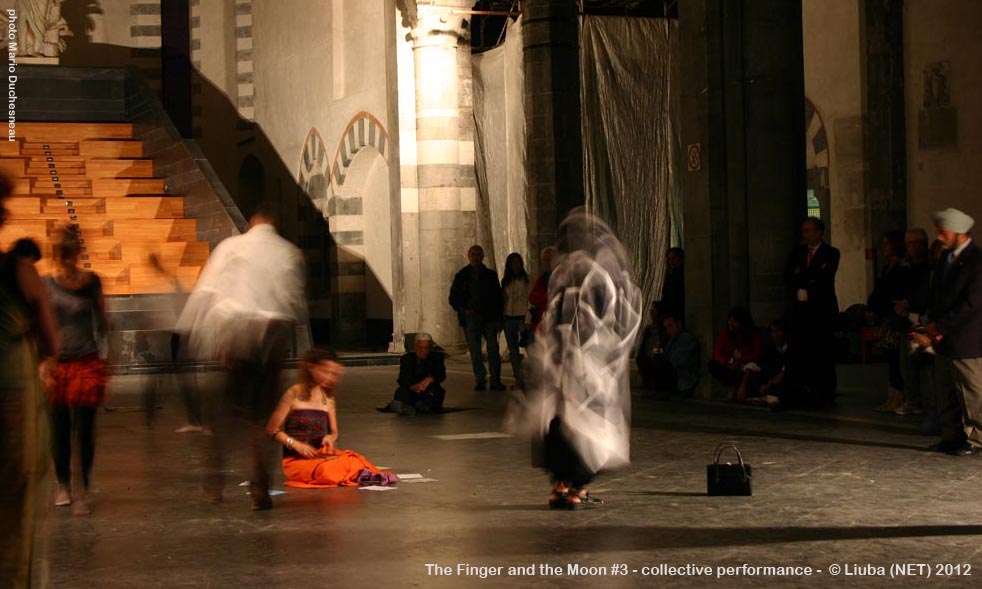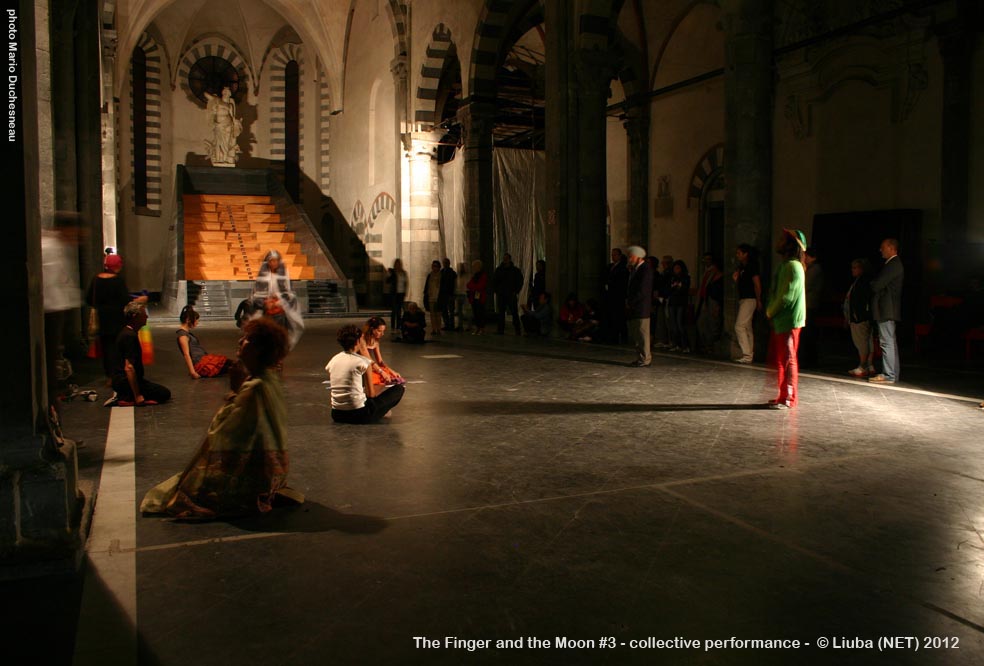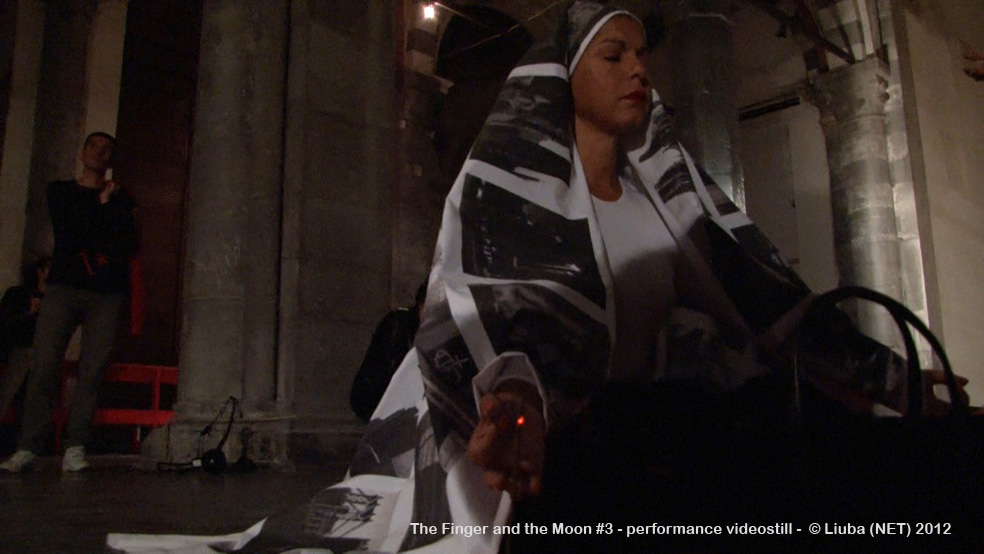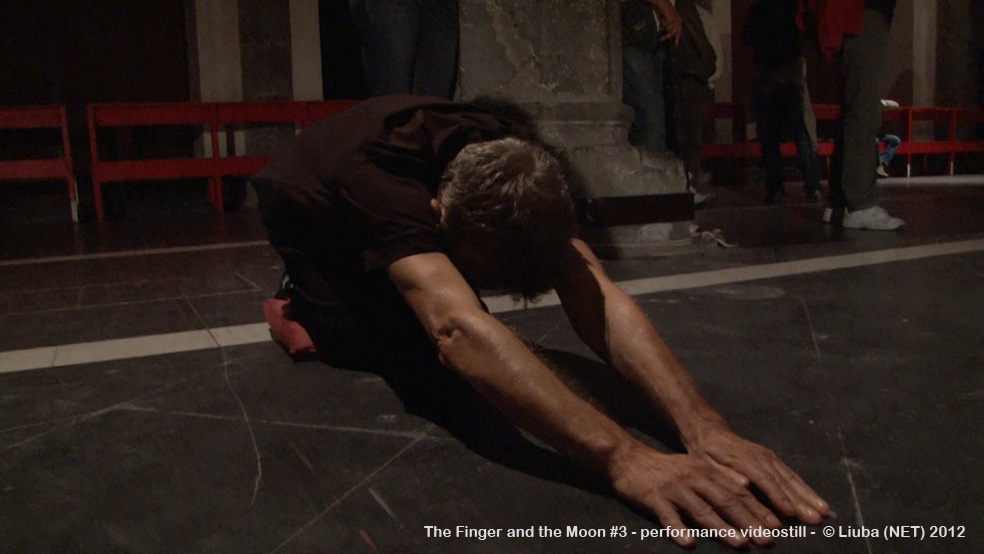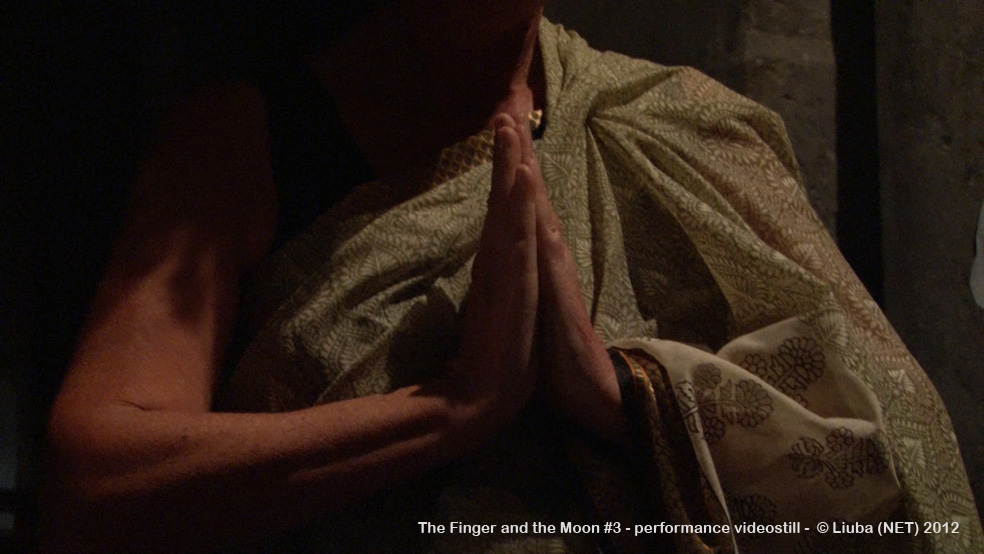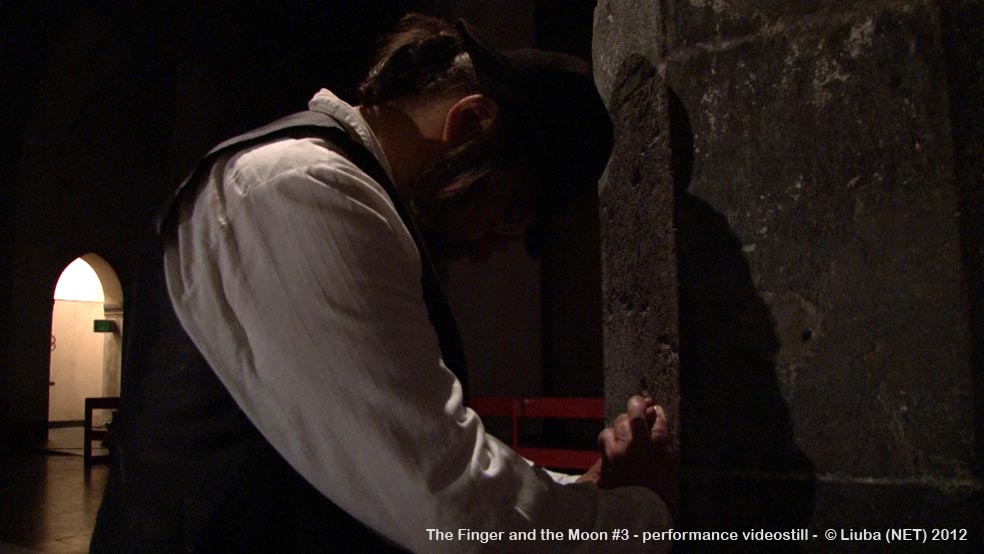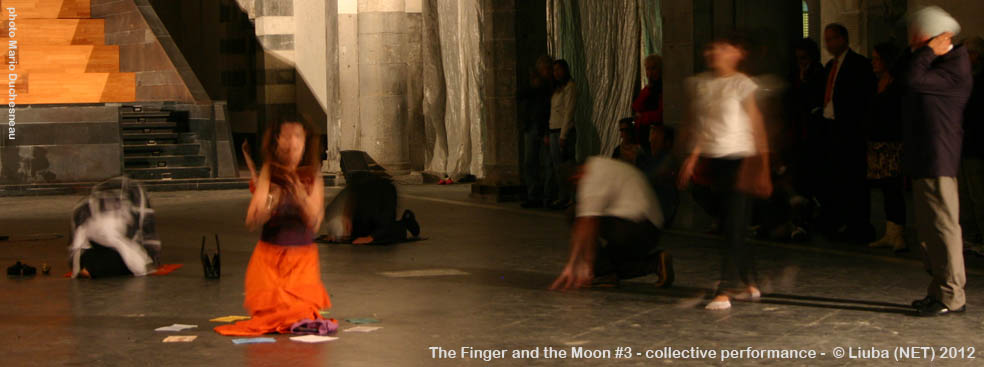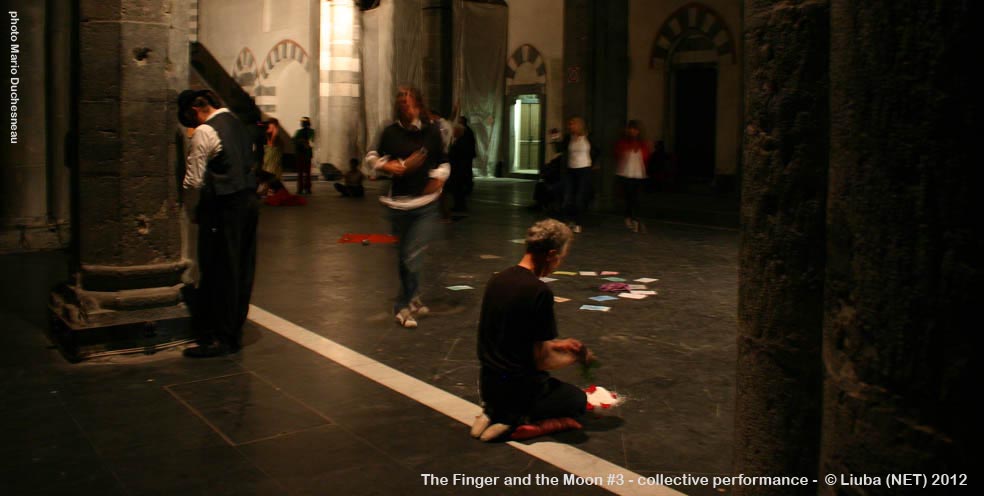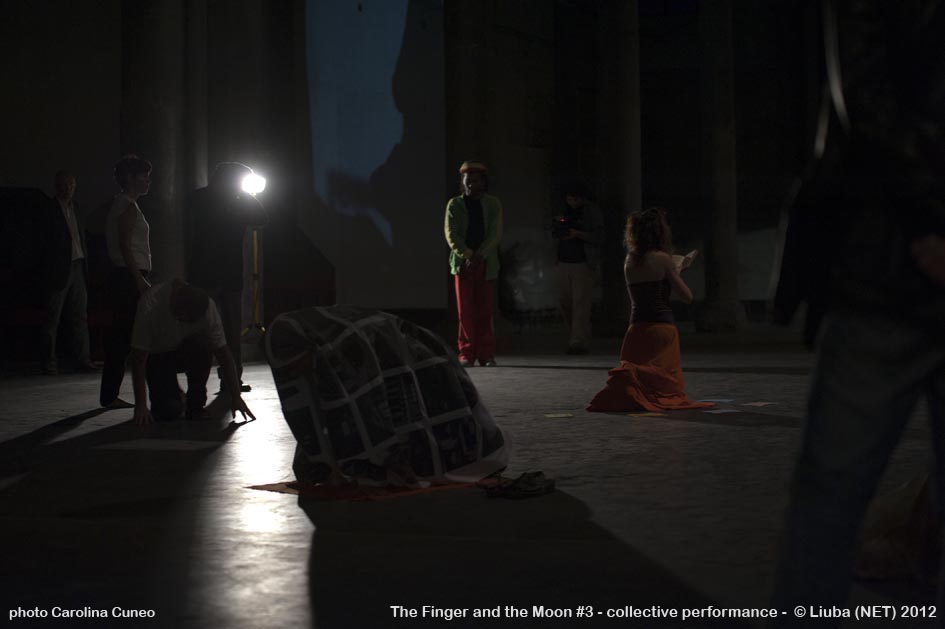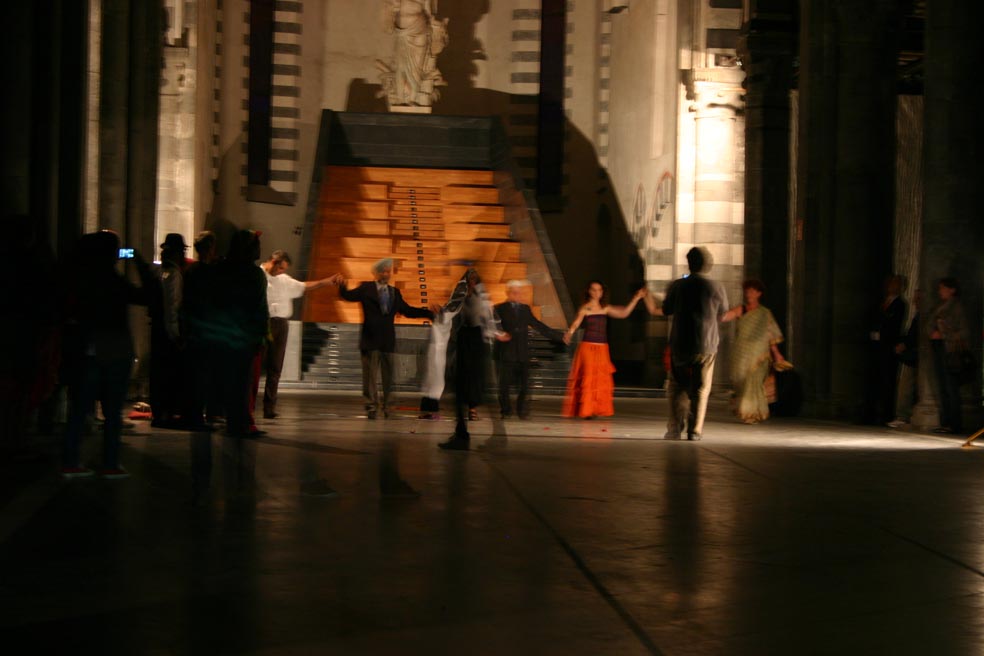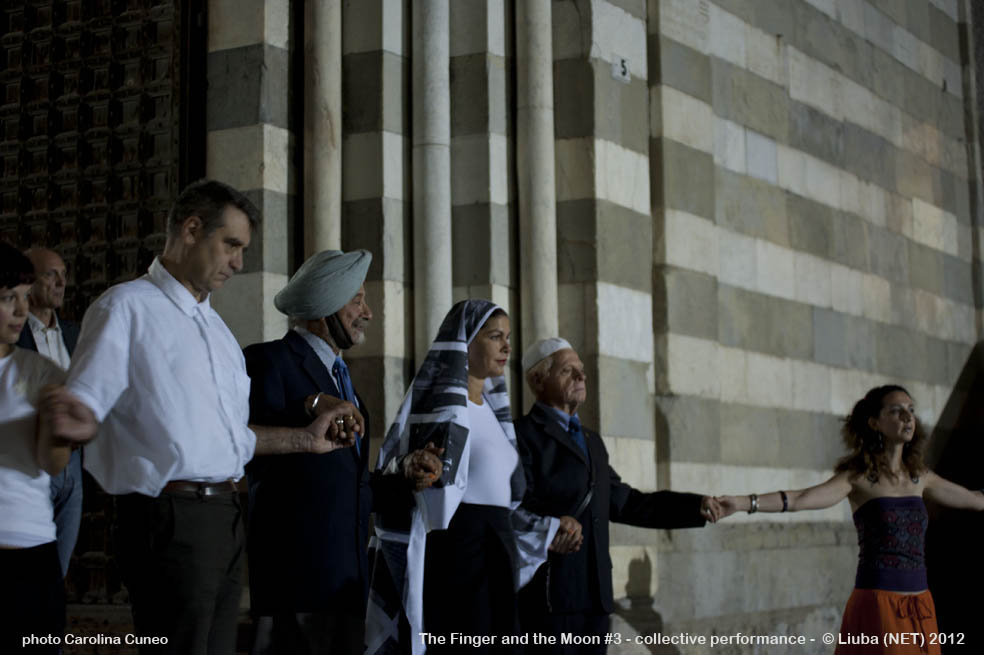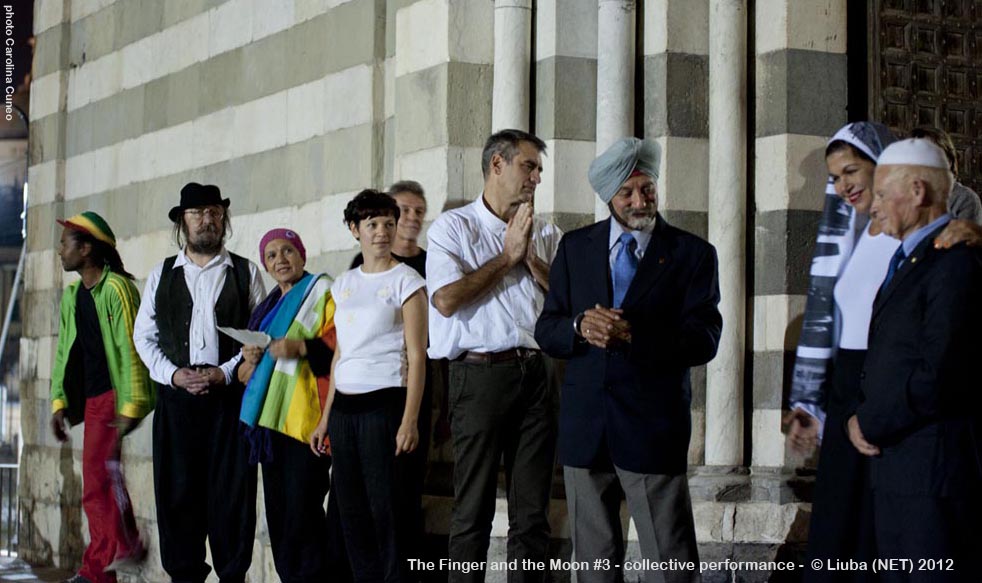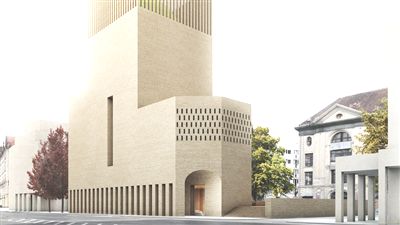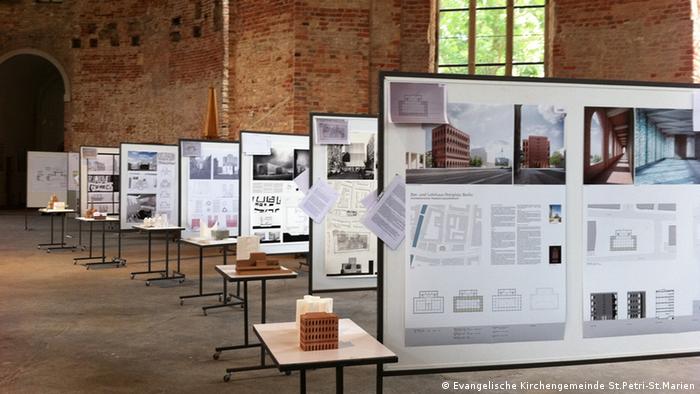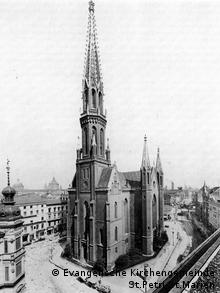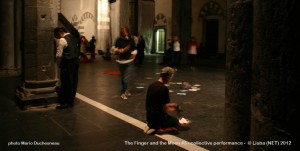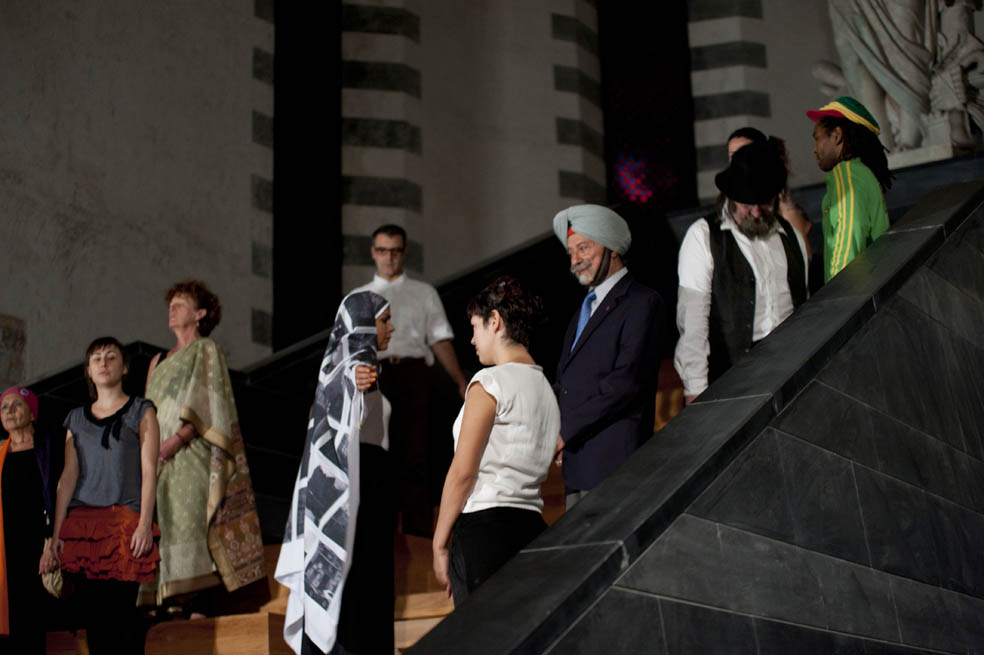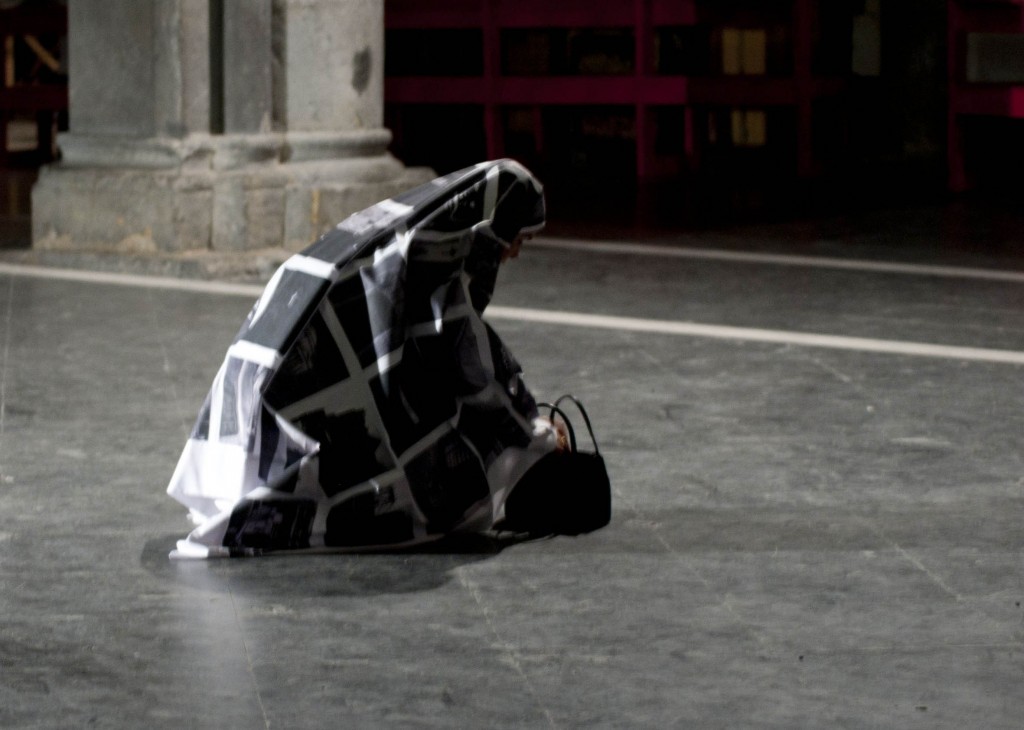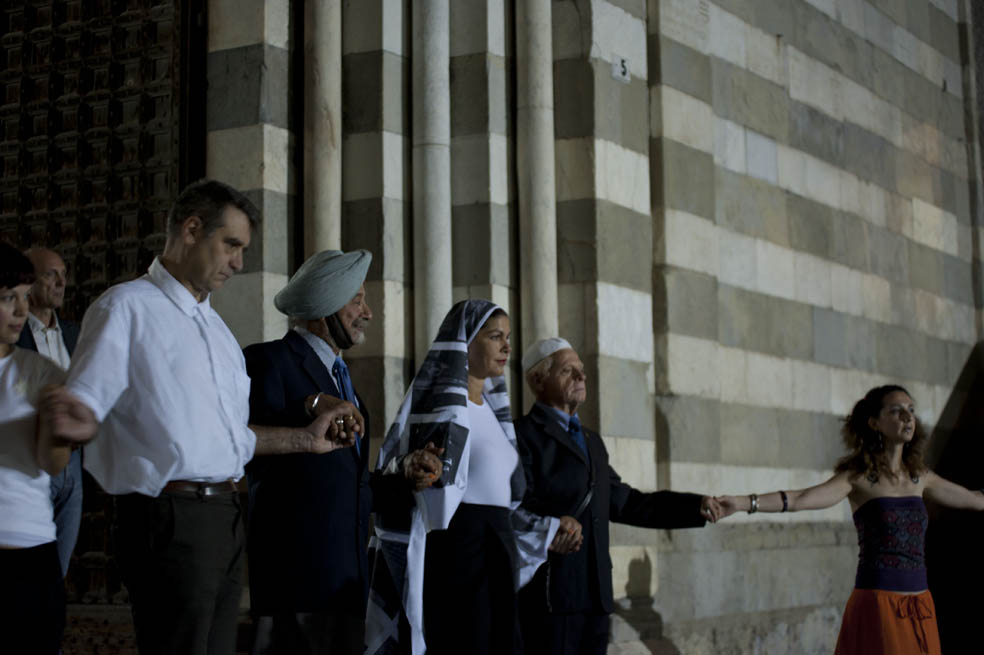COMUNICATO STAMPA (english version below)
Il giorno 29 settembre 2012 alle ore 21.30 in occasione delle “Giornate Europee del Patrimonio 2012” nella Chiesa sconsacrata di Sant’Agostino a Genova, parte del complesso museale omonimo, avrà luogo la performance di Liuba (Net) “The Finger and the Moon #3”. Terza tappa del progetto incominciato nel 2007 all’ Opening della Biennale di Venezia e proseguito nel 2009 in Piazza S. Pietro in Vaticano, curato da Luca Panaro con una trasmissione in streaming in gallerie in tutto il mondo, la performance che avrà luogo a Genova, in origine prevista per il 19 maggio nell’ambito della “Notte dei Musei” che è stata sospesa per i tragici fatti di Brindisi, ne costituisce uno sviluppo importante ed originale.
“The Finger and the Moon” riflette, infatti, sulla spiritualità nella nostra società, sull’affinità tra le diverse forme di preghiera, sulla libertà religiosa e il rispetto per ogni forma di religione, sulla limitatezza e la pericolosità del fanatismo e della chiusura al dialogo. A “The Finger and the Moon #3”, prenderanno parte esponenti delle più diverse confessioni religiose, che mediteranno insieme in una performance-rito collettivo.
L’evento, curato da Alessandra Gagliano Candela, è stato preceduto da quasi un anno di lavoro di mappatura sul territorio, svolto dall’artista e dall’antropologa Barbara Caputo, che hanno stabilito un rapporto diretto con le diverse comunità religiose presenti, coinvolgendo direttamente gli abitanti della città ad esse appartenenti .
La chiesa di S. Agostino, contenitore ricco di storia e di vissuto, si presta particolarmente alla realizzazione di questa performance-rito di grande impatto emotivo e concettuale: al suo interno una videoinstallazione presenterà i video delle due precedenti tappe, mentre le persone appartenenti alle varie confessioni procederanno ciascuna con la propria preghiera lungo la navata dell’antico edificio religioso. L’artista Liuba indosserà per l’occasione un nuovo abito-opera, frutto della collaborazione tra lei e la stilista Elisabetta Bianchetti come nelle due precedenti tappe.
Integrano il progetto un sito web apposito ed un blog multireligioso e multiculturale che ne supportano il divenire (www.thefingerandthemoon.net), servendo anche da piattaforma per un eventuale dialogo tra le comunità e i partecipanti al progetto, a testimonianza di un patrimonio culturale che l’arte contemporanea esalta ed arricchisce. Alla performance faranno seguito una pubblicazione ed una mostra negli spazi del Museo.
Liuba (NET) è il nome che Liuba ha scelto per mantenere la sua identità di artista, ma anche per evidenziare e ringraziare il network di persone che collaborano, supportano, assistono e contribuiscono ai suoi progetti, senza i quali il lavoro non sarebbe possibile.
In particolare per THE FINGER AND THE MOON #3 : Adelmo Taddei, Direttore del Museo di S. Agostino, Gianna Caviglia, Comune di Genova, Alessandra Gagliano Candela, curatrice del progetto, Barbara Caputo, antropologa, Elisabetta Bianchetti, stilista e produttrice dell’abito, Pat Veriepe, web developer, Francesca Agrati, assistente dell’artista, Carlo Timossi, assistenza tecnica e logistica, Claude Adrian Caponetto, per le traduzioni.
Un grande grazie ai donatori: P. Alessio Saccardo, per il suo generoso contributo che ha permesso di cominciare a realizzare tutto. Daniele Cabri e Nadia Antoniazzi, Annalisa Cevenini, Cecilia Freschini, Francesca Agrati, Geneviève Saya Brillet, Michel Duchesneau per il loro sostegno non solo economico.
—-
PRESS RELEASE
On September 29 2012 at 9:30 p.m. on the occasion of “Giornate Europee del Patrimonio 2012”, in the deconsecrated church of San’ Agostino, in Genoa, a part of the same museum complex, “The Finger and the Moon 3” Liuba (Net) will take place. The third part of ‘The Finger and the Moon Project, began in 2007, at the opening of the Biennale of Venice, and continued in 2009 in Piazza San Pietro in the Vatican (curated by Luca Panaro with streaming in art galleries around the world) will take place in Genoa and constitutes an important and original development.
“The Finger and the Moon”, in fact reflects, on spirituality on our society, on the affinity between different forms of prayer, on religious freedom and respect for every form of religion, on the limits and dangers of fanaticism and of the closing of dialogue. Diverse religious groups will take part in “Finger and the Moon 3”, that will meditate together in a collective performance.
The event, curated by Alessandra Gagliano Candela, is preceded by almost a year of work on the mapping of the territory on the part of the artist and by the anthropologist Barbara Caputo, who established a direct rapport with different religious communities in the area, directly involving the inhabitants of the city.
The church of Sant’ Agostino, a rich container of history and life, lends itself particularly well to the realization of this performance/rite of great emotional and conceptual impact: the interior will host a video-installation that shows the videos of the two preceding stages of the project, while members of diverse religions pray in the nave of the ancient religious building. Liuba is wearing a new art work/clothing fruit of the collaboration between her and the stylist Elisabetta Bianchetti.
Integrated into the project is a special web site and multi-religious and multicultural blog that support the future of the project (www.thefingerandthemoon.net), serving, also, as a platform for an eventual dialogue between the community and project participants. Following the performance there will be a publication and an exhibition in the Museum.
Liuba (NET) is the name chosen by the artist to maintain her identity as an artist and to underline and thank the network of people who collaborate, support, witness and contribute to her project, without which the work would not be possible.
In particular, for The Finger and the Moon 3 I would like to thank : Adelmo Taddei, Director of the Sant’Agostino Museum, Gianna Caviglia, The City of Genova, Alessandra Gagliano Candela, project curator, Barbara Caputo, anthropologist, Elisabetta Bianchetti, stylist and project costume producer, Pat Veriepe, web developer, Francesca Agrati, assistant to the artist, Carlo Timossi, technical and organization help and Claude Adrian Caponetto, translator.
Many thanks to the donators P. Alessio Saccardo, for his generous contribution which allowed us to to realize the project and to Daniele Cabri and Nadia Antoniazzi, Annalisa Cevenini, Cecilia Freschini, Francesca Agrati, Geneviève Saya Brillet, Michel Duchesneau for their support, not just economic.

